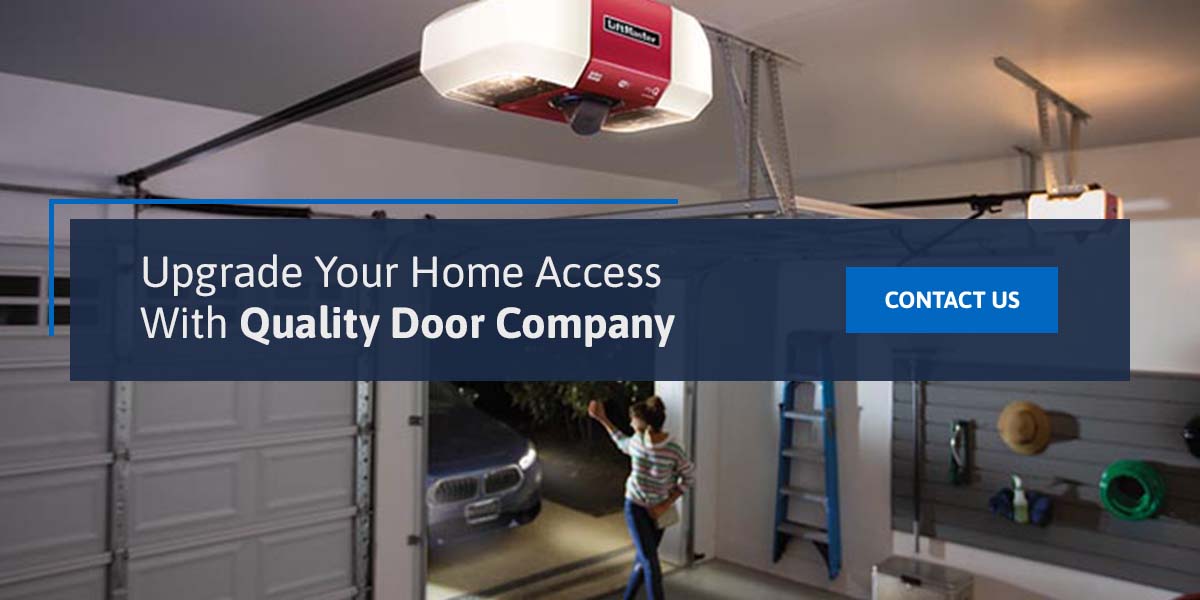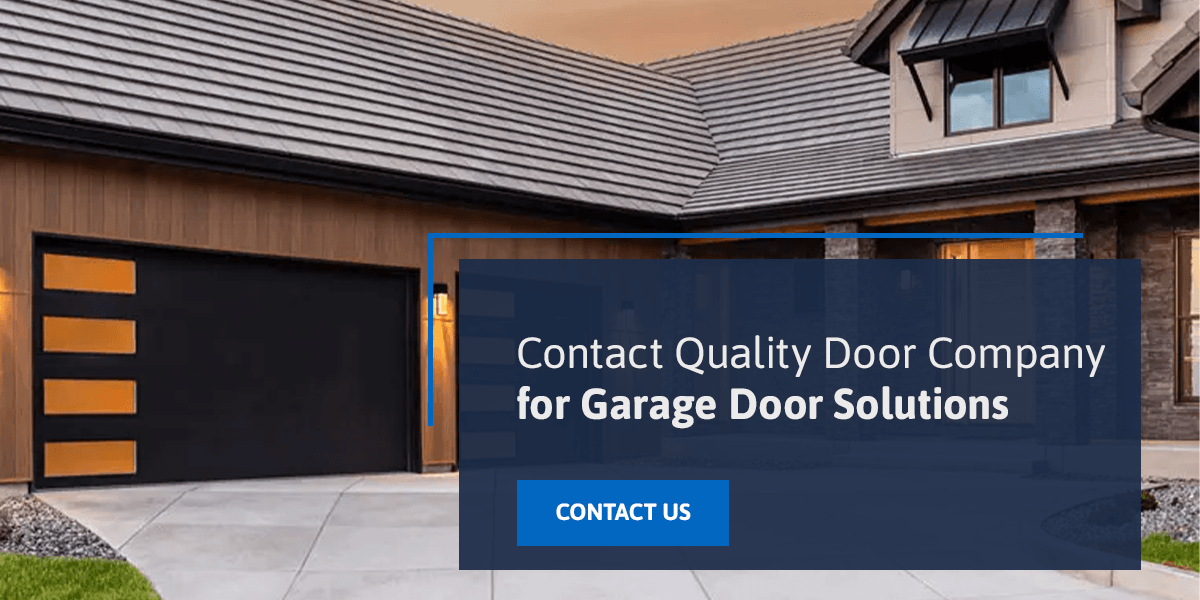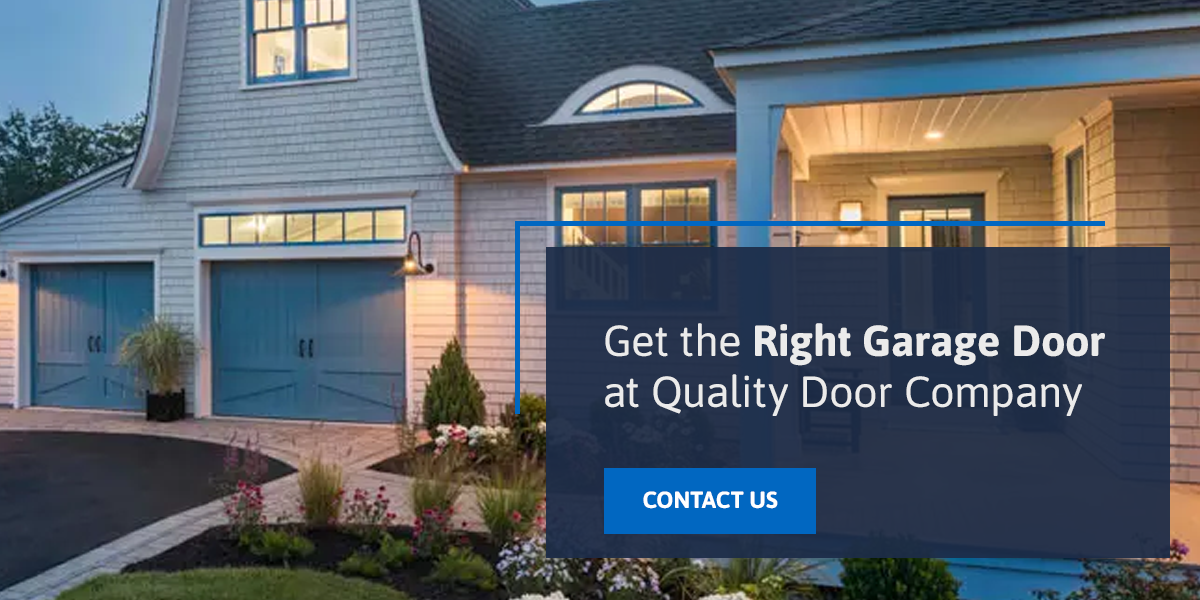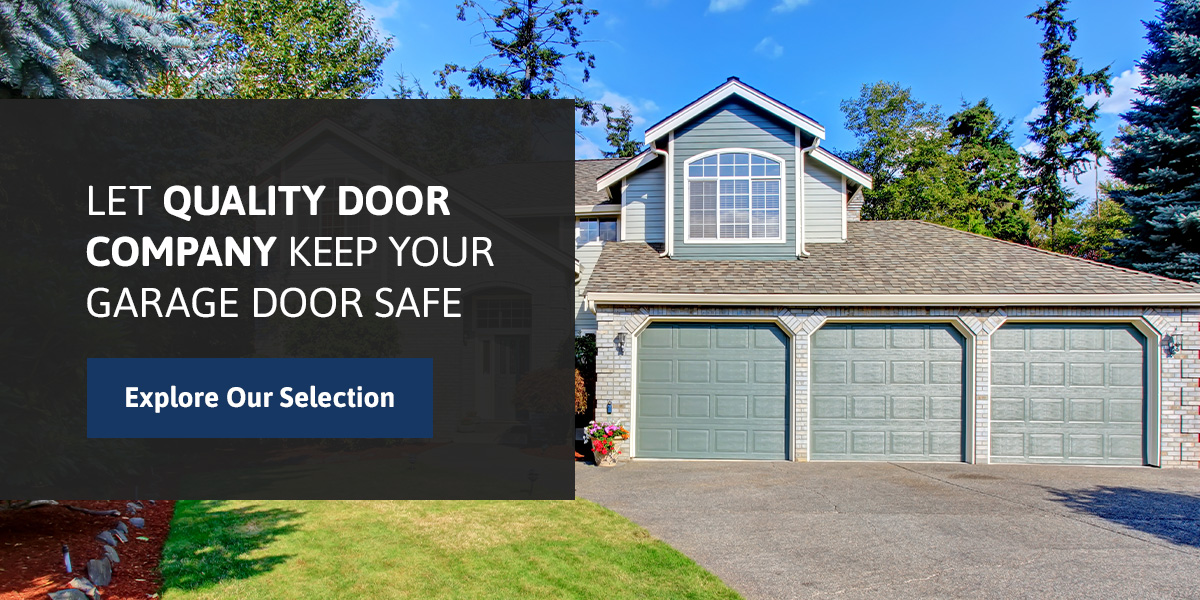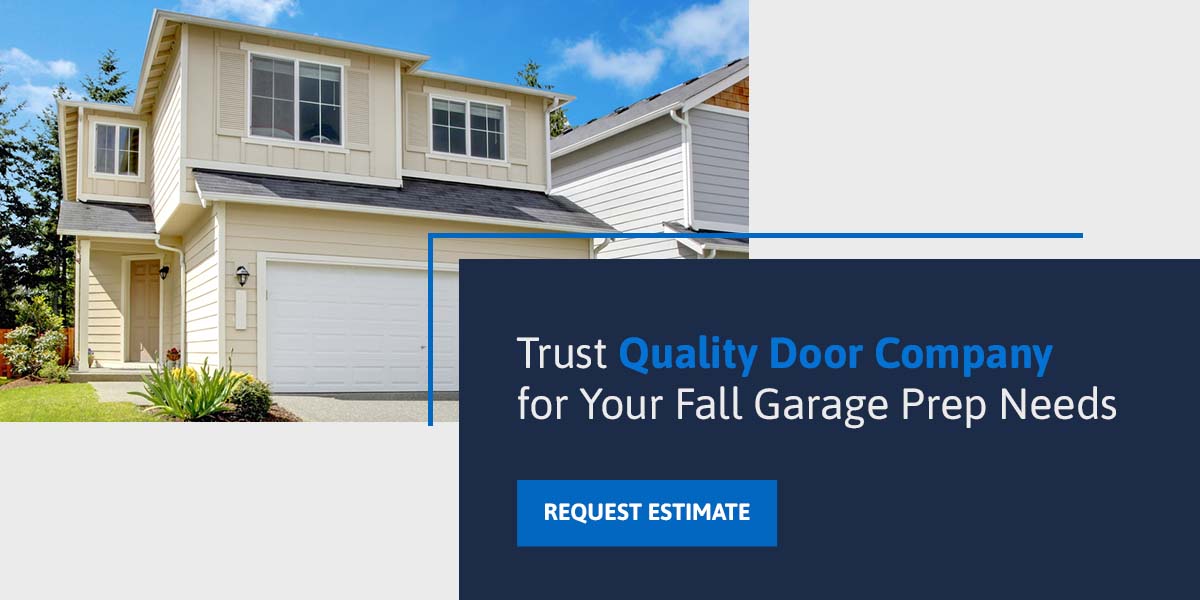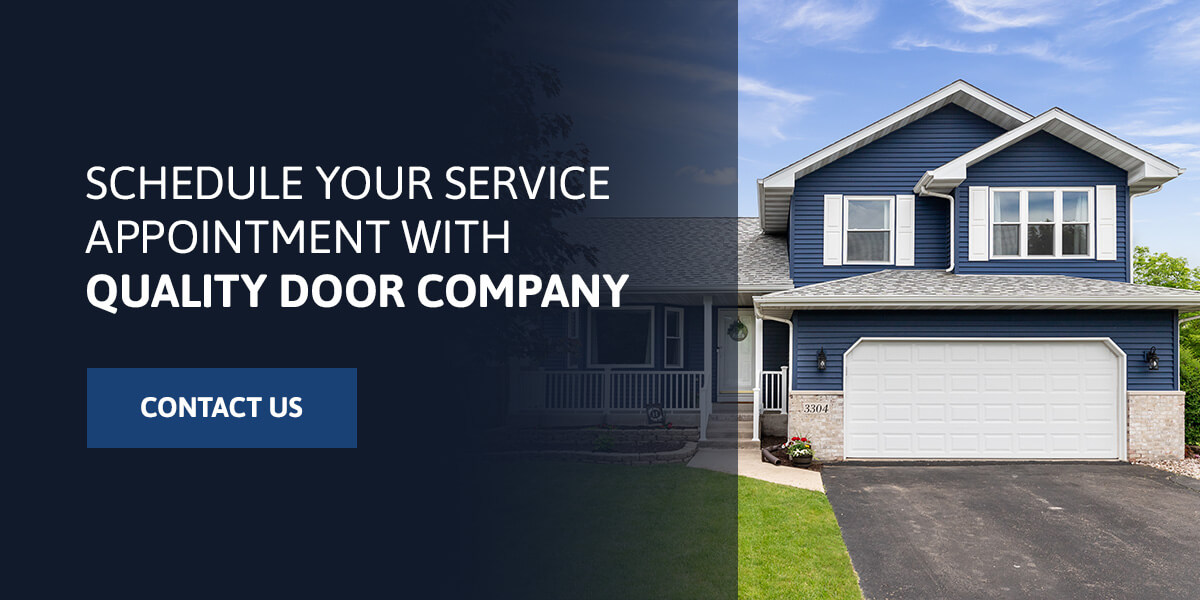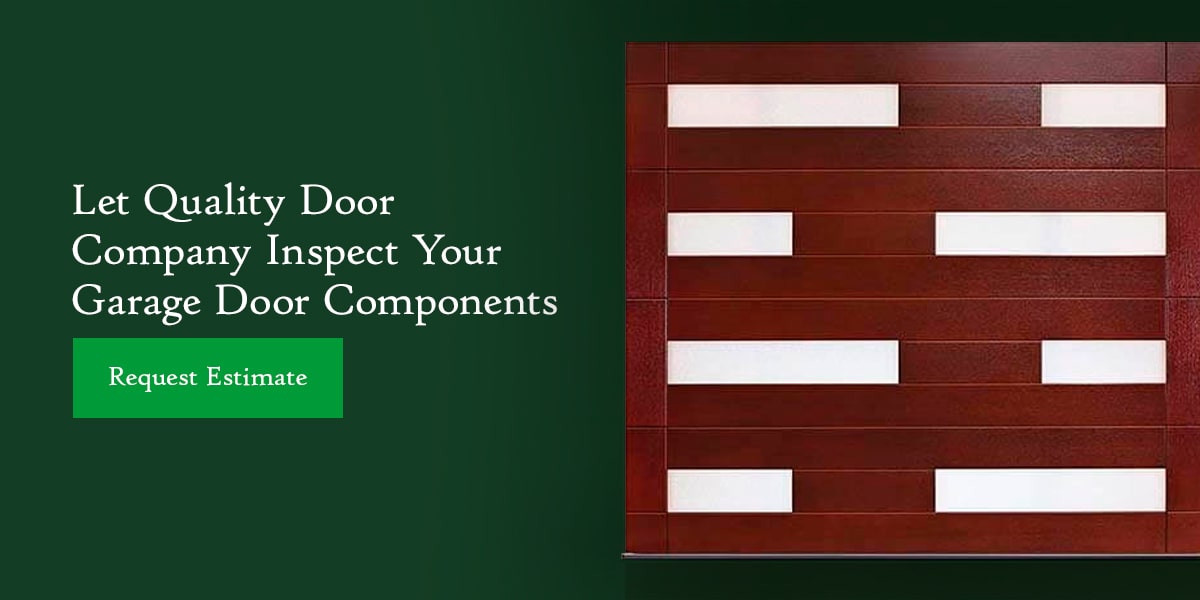Best Time to Have a Garage Door Installed
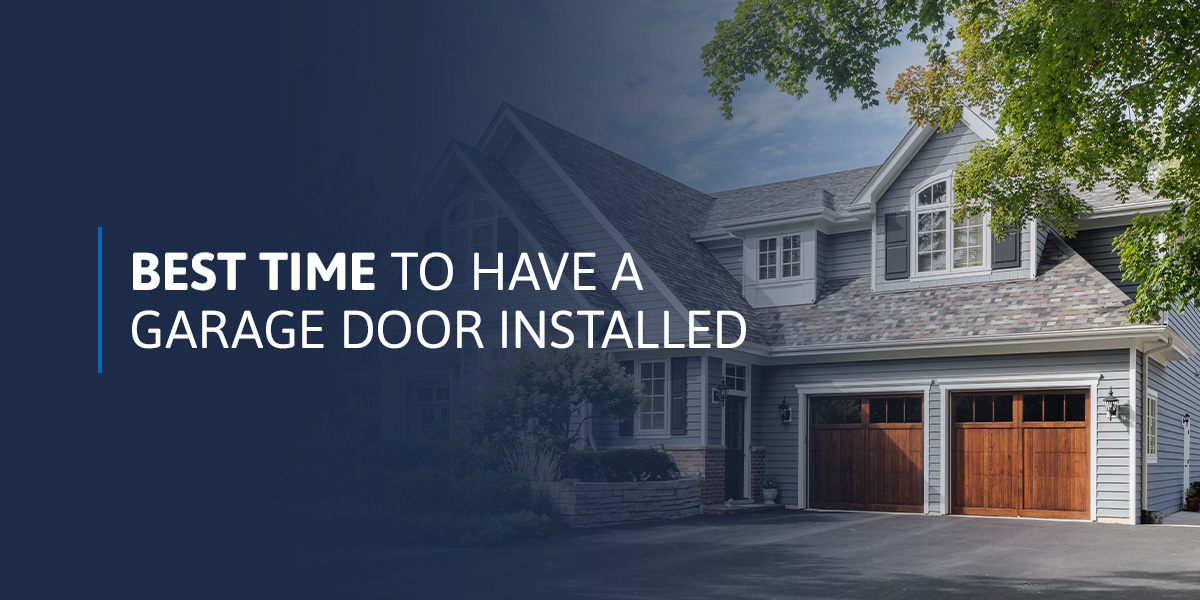
Your garage door may last for years, but there comes a time when you need an upgrade. Whether it’s because it constantly breaks down, even after numerous repairs, or due to normal wear and tear, installing a new garage door may be the right fit for your garage. While some cases may necessitate a speedy replacement, if you’re just looking for a garage door upgrade, the timing can make all the difference.
Best Season to Install a New Garage Door
The best time to have a garage door installed is when it’s broken or causing you trouble. There are some issues that require prompt repairs, but signs like slow or loud operation can indicate your door is reaching the end of its life span. If you’re able to plan ahead for your garage door replacement, you may want to consider waiting until spring. As a homeowner, timing is an important factor to consider whenever you have a renovation project, and garage door replacement is no exception. Knowing when to install a new garage door can make a big difference in the outcome.
Doing the installation in winter can be troublesome because of the snow, unpredictable conditions and shorter days. The cold will make the process take longer than usual. In addition, many garage door companies are busy during winter as they focus on repairs and other emergency calls.
Summer provides better conditions than fall and winter for garage door installation, but the humidity and heat can make it uncomfortable for the technicians. Additionally, since many homeowners leave their home improvement projects until the summer, you might encounter more scheduling difficulty. This leaves spring as the best season to install a new garage door if you can wait until then.
Why Spring Is the Best Season for Garage Door Installation
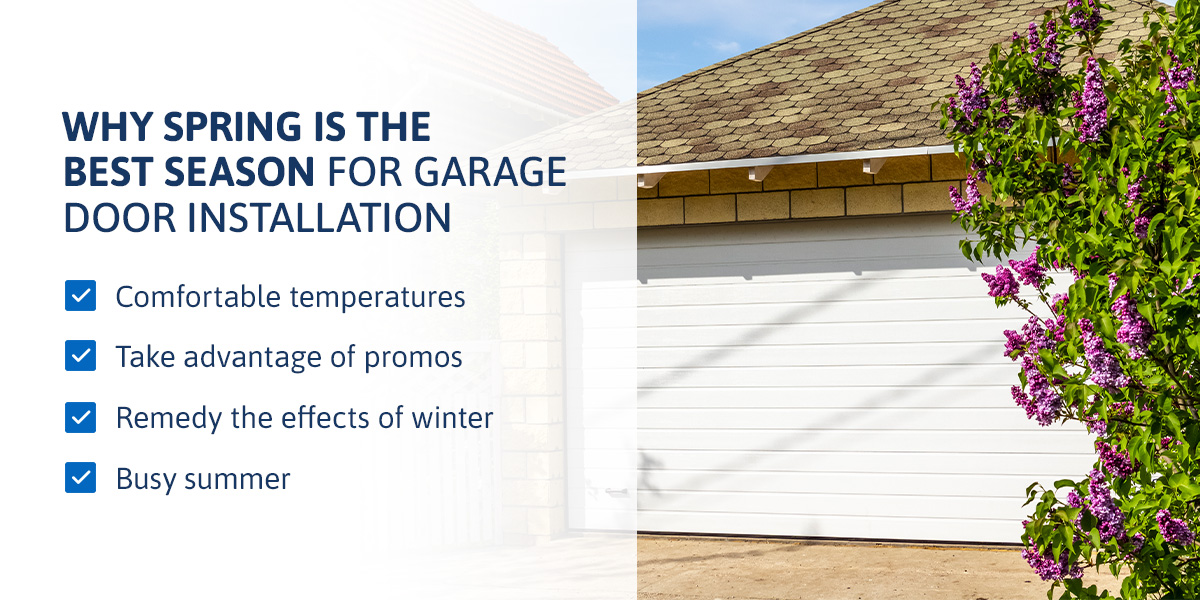
An emergency in any season will force you to replace your garage door urgently, regardless of the conditions. However, if you’re planning ahead for your garage door replacement, choose a season with the most favorable conditions. Here are some of the reasons why spring may be the best time for replacement:
- Comfortable temperatures: Garage door installers can work comfortably during spring. In addition, materials used during installation are safe when left exposed.
- Take advantage of promos: The winter season is slow for garage door businesses, and most companies offer attractive promotions on products and installations during spring. Manufacturers of garage doors also offer promotions during this season.
- Remedy the effects of winter: Winter can be harsh on garage doors. When the door’s chain, rollers, cable and spring are covered in frost, their performance can decline. In addition, freezing weather can cause cracks in the frames and panels. If you notice signs your door is struggling to get through the winter, spring is a great opportunity for a new door.
- Busy summer: For some families, summertime is packed with lots of activities and trips. You may not have time to spend hours at your home supervising renovations. The perfect time to have the door replaced is spring to save you more hours you can spend on other activities during summer.
How Long Does It Take to Install a Garage Door?
It takes minutes to schedule a garage door installation, but you may wonder how long it takes to install it. Many factors determine how long it takes to replace the door. These factors include:
- New construction: Installing the door in a new building takes less time because there is no door to be removed to create space. The installation should take two to three hours.
- Size: Size is one of the most significant factors determining how long it takes to install the door. A large door will take longer to replace than a smaller model.
- Similarity: If the new and existing doors are similar, the installation should take a few hours. This is because the new door is compatible with the available space and structure.
- Installers’ experience: Installing a new door can be challenging, and that’s why it’s important to call a professional. Professional garage door installers will not take as long to do their job because they have the skills and experience to assess your garage and adapt to your needs. Accidents and mistakes while attempting to do it yourself (DIY) can also significantly extend the service time.
- Weather conditions: Snow, rain and windy conditions can make the installation process take longer.
- Existing structure: If your existing structure needs modification to install your new garage door, this will extend the installation time frame. Parts like back jambs, ceiling beams and mounting pads may need to be replaced or modified.
What Is the Average Price for a New Garage Door?
The national average cost for a new garage door is $1,200. However, the price can vary depending on various factors, such as the materials used to manufacture the door.
The following are the main factors that determine the price of a garage door:
- Material: Common garage door materials are steel, fiberglass, aluminum and wood. Aluminum and steel are the cheapest options, while wood is often the most expensive.
- Type of door: Common types of garage doors include carriage, glass, standard panel, French, tilt-up, roll-up and retractable. The most cost-effective option is the standard panel type, while the most expensive is carriage.
- Size: You can buy your garage doors in three-car, two-car and one-car options. One-car garages cost less because they use the least amount of materials.
Besides the cost of a new garage door, you may also want to consider the installation cost. Some of the factors that come into play to determine the cost of garage door installation are labor, electrical work, add-on accessories, insulation and location. Installing an automatic door will cost you more than a manual door. Smart garage door openers may come with higher costs due to their more advanced features.
In most parts of the country, a garage door replacement is considered a minor home improvement, and you’ll not need a permit to change the door. However, a permit is likely required if you plan to make changes to accommodate the new door. These changes may include removing a pedestrian door, making a door opening wider or widening a wall.
Contact Quality Door Company for Your Garage Door Installation
Installing a new door may be the most cost-effective solution if your current door keeps on breaking down even after repairs. You may also need a new door if your current one has reached or exceeded its projected life span. Spring is the best time to do the replacement because of the favorable weather conditions and attractive promotions.
At Quality Door Company, we can install a new garage door for you at any time of year. You can choose from our range of high-quality garage doors made by Cornell, Clopay® and LiftMaster®. We specialize in residential and commercial garage door sales, installations and repairs.
Contact us for more information and request an estimate for a new garage door today.
Does My Car Have HomeLink®?

Have you ever wished you could open your garage door without fumbling for a remote or turn on your house lights before stepping inside? With HomeLink® compatibility, you can do that from the comfort of your car. This comprehensive guide will provide the essential information to set up and use HomeLink.
What Is HomeLink in a Car?
HomeLink is a leading provider of smart home solutions. Its products include an integrated programmable transmitter typically located on a vehicle’s media player, overhead console or visor. The transmitter can be paired with compatible receivers in your garage door opener, gate operator or home lighting system.
Once programmed, it can control multiple radio-frequency devices with a single button press, eliminating the need for separate remote controls. HomeLink offers a seamless and secure way to operate your garage and other home devices without leaving your vehicle. For example, as you approach your driveway, you can press the HomeLink button to open your garage door automatically.
The technology behind HomeLink involves a secure rolling-code system that prevents unauthorized access to your devices. Each time you use your HomeLink to control a device, it sends a unique code that changes with every use, ensuring your home remains protected from potential intruders.
What Devices Are Compatible With HomeLink?
HomeLink system is designed to work with many home devices that operate on radio frequencies. The most common applications include:
- Garage door openers
- Driveway and estate gates
- Interior and exterior lighting systems
- Home security systems
For a device to be HomeLink compatible, it must have a “learn” or “program” button to accept new radio frequency codes. HomeLink works with most garage door openers manufactured after 1993, including popular brands like LiftMaster.
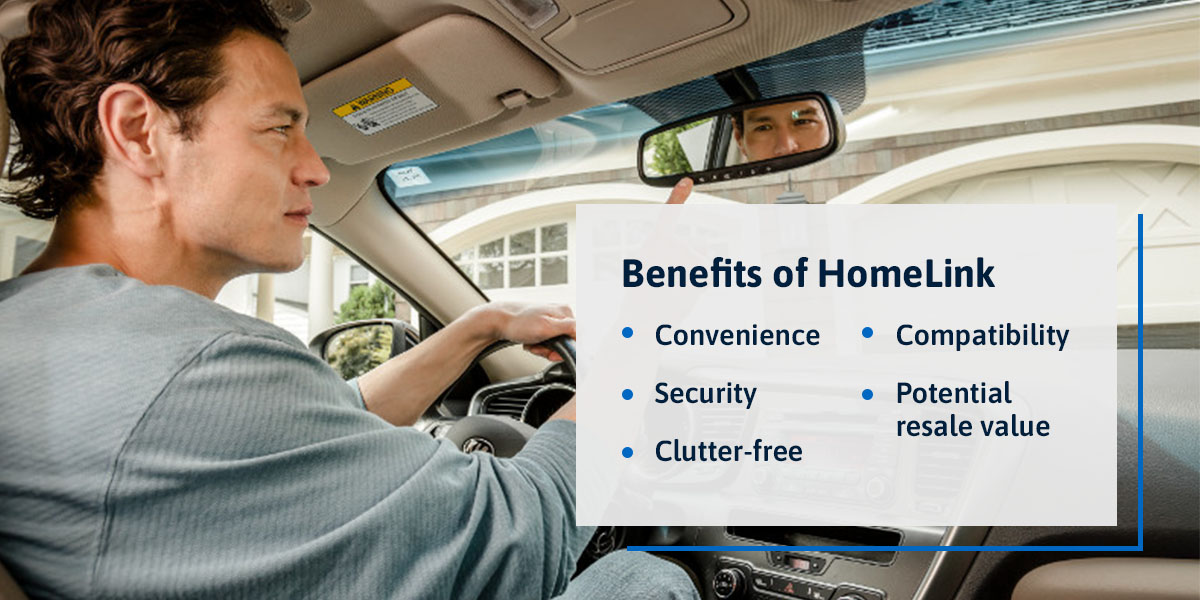
Benefits of HomeLink
HomeLink offers numerous benefits to homeowners, making it an essential feature for modern vehicles:
- Convenience: With HomeLink, you can control your garage door, gates and other devices without needing separate remotes or having to get out of your car.
- Security: HomeLink’s rolling-code technology protects your devices from unauthorized access, providing an extra layer of security for your home.
- Clutter-free: By integrating multiple remote controls into a single system, HomeLink helps reduce clutter in your vehicle and eliminates the need to keep track of multiple devices.
- Compatibility: HomeLink can work with countless garage door openers, gates and lighting systems, ensuring you can integrate it seamlessly into your existing home setup.
- Potential resale value: Vehicles equipped with HomeLink can be more attractive to buyers, as the technology adds convenience and modernity to the car.
Does My Car Have HomeLink?
HomeLink has been a staple feature in many vehicles since 2002, particularly those in the mid to high-end range. Brands that frequently offer HomeLink include:
- Acura
- Audi
- BMW
- Buick
- Cadillac
- Chevrolet
- Chrysler
- Ford
- GMC
- Honda
- Hyundai
- Jeep
- Lexus
- Lincoln
- Mercedes-Benz
- Nissan
- Porsche
- Toyota
- Volkswagen
- And many others
To determine if your vehicle has HomeLink, examine the rearview mirror, overhead console and visor for built-in buttons with a house-shaped icon. If you don’t see an icon, try pressing and holding the two outer buttons on the built-in remote. A rapidly blinking indicator light confirms your car has HomeLink.
Some vehicles may have a similar built-in remote system that is not HomeLink. These systems may be aftermarket versions of HomeLink, fakes or entirely different smart home systems with different programming requirements and compatibility. Verifying that your vehicle is equipped with genuine HomeLink technology is essential before attempting to set it up.
How to Set Up HomeLink in Car
HomeLink setup instructions may vary slightly depending on your vehicle and the device you are pairing. However, the general process for how to set up HomeLink in your car is as follows:
- Park your vehicle in front of the garage door with the ignition turned on.
- Locate the HomeLink buttons on your mirror, visor or console.
- Press and hold the desired HomeLink button you wish to program.
- While holding the HomeLink button, press your garage door opener remote close to the HomeLink buttons until the indicator light begins flashing rapidly.
- Release both buttons once the light starts flashing.
- Enter your garage and press your opener motor head’s “learn” button.
- Return to your vehicle and press the programmed HomeLink button until the garage door activates.
For the most precise set up instructions, visit the HomeLink website and enter your vehicle make, model and year and garage door opener manufacturer and model. The website will generate a custom set of instructions tailored to your configuration, ensuring a smooth and successful setup process.
Some newer garage door openers may have a more streamlined programming process, such as LiftMaster’s “learn” button method. Consult your device’s manual for the most accurate and current programming instructions.
How to Program HomeLink to LiftMaster
LiftMaster openers offer cutting-edge technology, robust security features, ultra-quiet operation and seamless HomeLink compatibility for home garages. The advanced encryption and rolling code technology in LiftMaster openers ensure a secure and stable connection with your HomeLink system, providing you with reliable, long-term performance.
To program HomeLink to LiftMaster, follow these steps:
- Locate and press the “learn” or “smart” button on your LiftMaster opener motor head.
- Within 30 seconds, press and hold your desired HomeLink button in your vehicle for a few seconds.
- Once the opener lights blink, release the button and your HomeLink will be synced.
In addition to the standard programming method, some LiftMaster openers also offer a “quick-learn” feature that allows for even faster and easier syncing with HomeLink. This feature enabled your opener to automatically detect and pair with your vehicle’s HomeLink system, eliminating the need for manual programming steps.
Troubleshooting Issues With Your HomeLink Garage Connectivity
While HomeLink is designed to be user-friendly and reliable, there may be instances where you encounter issues with programming or operation. Some common problems and their solutions include:
- Inconsistent operation: If your HomeLink garage connection works intermittently, ensure you are within range of your garage door opener and that no obstructions are blocking the signal. You may also need to check and replace the batteries in your opener’s remote.
- Unresponsive buttons: If your HomeLink buttons do not respond when pressed, verify that your vehicle’s ignition is turned on and that the system has power. If the issue persists, you may need to reset your HomeLink by holding down the two outer buttons until the indicator lights blink rapidly. Your opener may need repairs, so consult a technician.
- Unsuccessful programming: If you have followed the programming steps but HomeLink fails to sync with your device, ensure you use a compatible opener and that the learn button is functioning correctly. You may also need to consult your vehicle’s manual or HomeLink’s website for specific troubleshooting steps.
If you continue to experience issues with your HomeLink system, contact your vehicle’s manufacturer or a professional garage door opener installer like Quality Door Company for further assistance.
Upgrade Your Home Access With Quality Door Company
HomeLink is an exceptional and safe smart system that makes accessing your home quick and easy. Setting up HomeLink in your car allows you to unlock a new level of convenience and control. To fully capitalize on the benefits of HomeLink, you need a premium garage door opener that can keep pace with this advanced technology. Quality Door Company, a trusted name in garage door services since 1984, is your ideal partner for installing and maintaining a HomeLink-compatible LiftMaster opener.
Contact us today for a free quote and take the first step toward elevating your home access experience.
A Guide to Garage Door Security
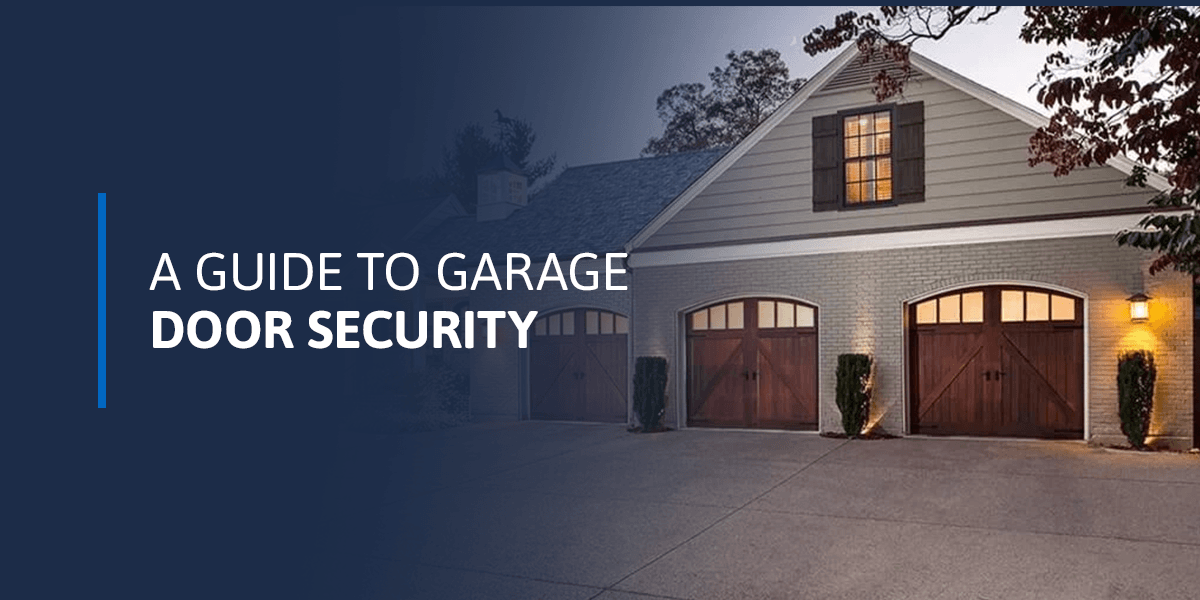
Garage doors are the largest entry points to homes. While useful and convenient, they provide alternative access aside from entry doors, making them vulnerable. Garages lack intricate rooms and internal doors that present additional challenges for intruders.
Since the only object standing between the valuables in your garage space and a burglar is your garage door, the security risk can be high. You may have secured other entries in your home. But have you considered garage door security?
Security Concerns for Garage Doors
Larceny/theft, motor vehicle theft and burglary are the most common property crimes in the United States. Due to the prevalence of motor vehicle theft, your garage door could be a target. Also, considering intruders are always looking for the easiest score, the garage door may be the most attractive option if it’s not secure.
Here are some of the security risks associated with garage doors:
- Hacking: Garage door openers are electronic devices and, to some extent, are vulnerable to hacking.
- Damage: Normal wear and tear can make your garage door weak and vulnerable to forced entry.
- Weak locks: A garage door without a strong locking system is a security risk.
- Lack of a security system: Homes lacking robust and modern security systems make it challenging to monitor and deter suspicious activity around the garage.
How to Secure Your Garage Door
You may have a strong garage door, but it can only be secure with an equally strong locking system. Good locks make securing your garage door easy and access-proof whether you’re home or not. So, how do you prevent unauthorized entry into your garage door when you’re home or away?
How to Secure the Door From the Inside
A determined intruder can use many tricks to trigger your garage door to open when connected to the automatic door opener. Common tricks like slipping a coat hanger through the gap at the top and hooking the release lever tend to be successful with standard door openers. You can avoid such scenarios if you’re home by engaging manual locks to improve security.
If your door has a manual deadbolt, slide it in place before leaving the garage. You can also install a deadbolt yourself. Alternatively, plug a padlock or a C-clamp into the tracks to lock them, preventing the door from lifting if someone tampers with the automatic feature.
How to Secure the Door From the Outside
Utilizing various methods to secure your garage door from the inside is much easier than when you’re outside. To lock your garage door from the outside, close it using the automatic function or manually lock it. The latest garage door opener technologies are more challenging for intruders, making it easier to keep your garage door safe when you’re out.
If you have an older opener or want to reinforce the door from the outside, install a T-handle garage door lock, which allows you to lock and unlock the garage door using a key. For steel doors, you could weld a strong latch next to the frame and use a heavy-duty padlock.
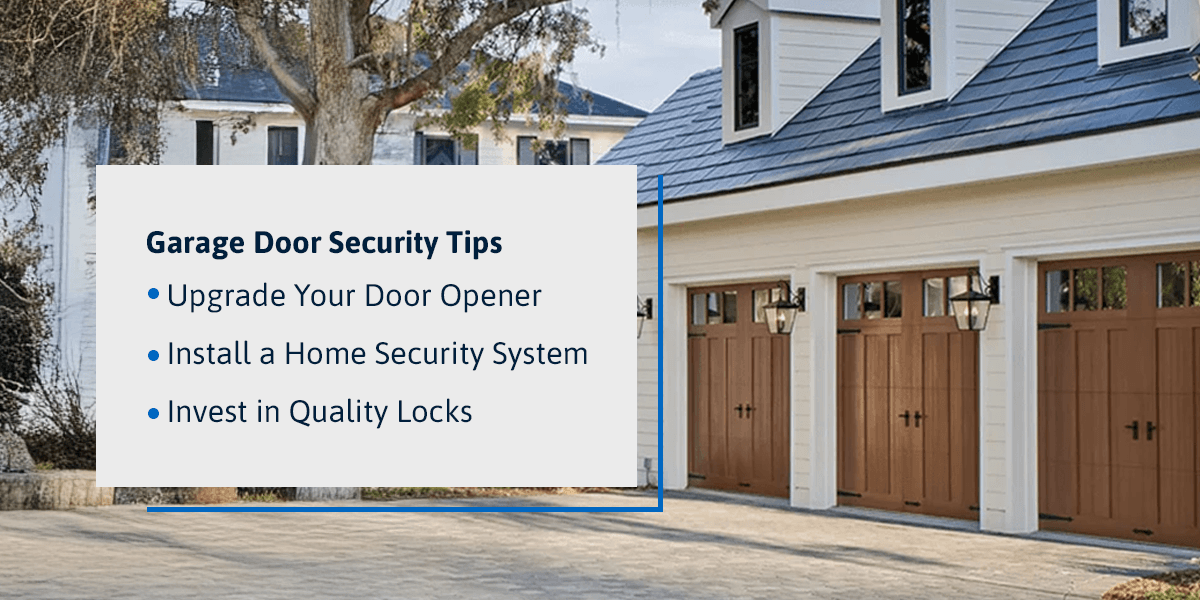
Garage Door Security Tips
While garage doors can be vulnerable, they are tougher targets if you take steps to keep them secure. Here are garage security measures that can significantly burglar-proof your garage door:
Upgrade Your Door Opener
A door opener can be the most susceptible part of a garage door, as today’s intruders are tech-savvy and can hack the remote system to gain access. Enhance your garage’s security by investing in the latest door opener from trusted brands like LiftMaster. When picking a garage door opener, consider the brand’s advanced security features.
With a top-quality brand like LiftMaster, you’re guaranteed advanced garage door security features such as:
- Rolling code system: The system generates a new code every time you use the remote, which prevents intruders from obtaining a used code via code-grabbing devices.
- Built-in automatic lock: LiftMaster openers come with deadbolt locks that automatically secure your garage door every time it closes, adding another layer of security if you forget to engage manual locks.
- Programmable timer: This feature allows you to program the door to close at specific times each day.
- Forced entry protection: LiftMaster’s built-in Posilock® security feature protects the door from forced openings.
- Motion detection: The door opener feature activates lights when it detects movement in the garage.
Install a Home Security System
Security systems are among the most effective strategies for protecting your property. Considering an on-site alarm alone can deter 60% of burglars, it makes sense to invest in several security features that work together to safeguard the different entry points in your home, including the garage. Effective security devices you can install include:
- Alarms: Installing a powerful alarm on your garage door will significantly enhance security by alerting you and those nearby of an attempted break-in.
- CCTV cameras: Video surveillance is a crucial security feature that discourages break-in attempts by helping identify intruders. For home security, you could install cameras that combine motion detection and bright light to maximize functionality with a single device.
- Motion detectors: Motion detector lights are convenient and affordable devices that make it challenging for intruders to target your property. Installing one near or at the top of your garage door will help ward off intruders, as it activates whenever it detects moving objects.
Invest in Quality Locks
Intruders and burglars often have a short window to gain access, find valuables and escape. They’ll look for the easiest way in. Upgrading your locking system can make accessing your garage door more challenging. Simple deadbolts alone offer superior strength, making your garage door almost impenetrable. For added security, you could invest in multiple locks to develop a serious barrier even when one is compromised.
There are different types of garage door locks, including:
- Keyed locks: These are the basic types that require a key to unlock, such as padlocks, deadbolts and handle locks. Keyed locks’ main advantage is their simple but robust construction.
- Electronic locks: These types are more sophisticated and include keypad locks, key fob locks and smart locks.
Reinforce the Garage Door
You can reinforce your garage door further by prioritizing maintenance to strengthen weak points and installing security bars. Regular maintenance can help identify and fix issues intruders are likely to use as leverage. Adding a steel security bar that you can lock from the outside can also lend additional security.
Contact Quality Door Company for Garage Door Solutions
As a prominent part of your home, your garage door is critical to your convenience and security. Understanding the potential security threats and implementing proper measures will help prevent unauthorized access and secure your valuables. Your garage’s security begins with investing in a strong, modern garage door made from durable materials using the latest technologies.
Quality Door Company is an industry leader serving Western Michigan. We provide high-quality garage doors and essential parts like door openers. We also offer professional services like installation and preventive maintenance. Contact us today to speak to one of our expert technicians!
How to Measure for a New Door
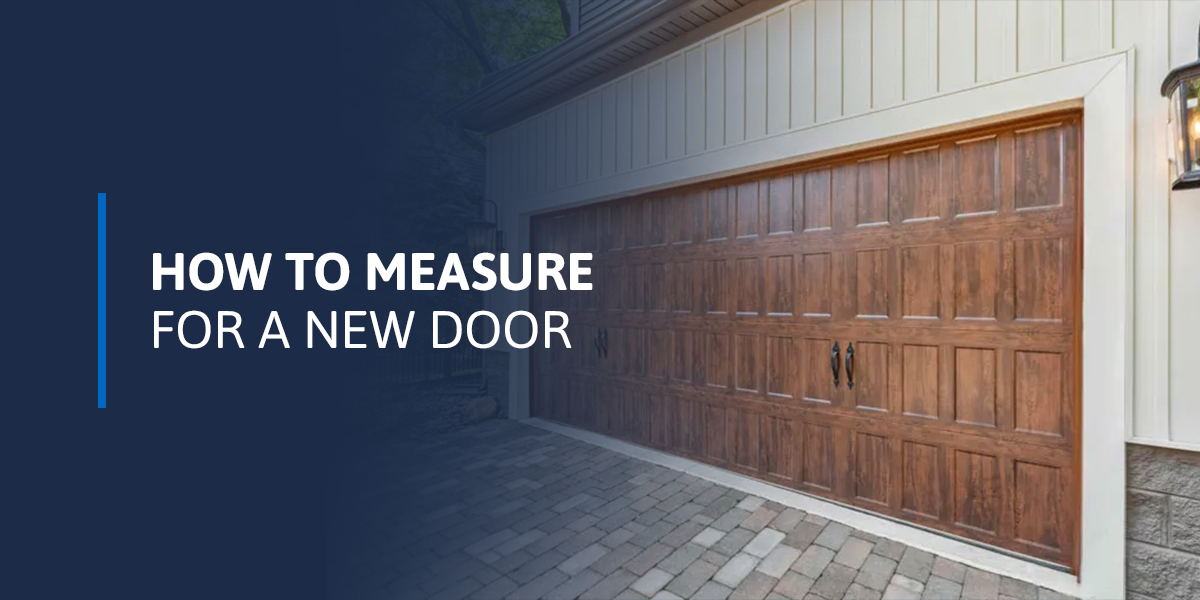
If you’re working on a home renovation project that involves replacing your garage door, you’ll want to take accurate measurements before shopping for doors. The last thing you want is a replacement door that’s too big or too small for the opening. Correct measurements will help you order the right door size and door type for the unique dimensions of your garage space. It will also help your technician place a quote and ensure seamless installation.
Unless you opt for expert services that include assessment, measuring and installing the door, knowing how to measure a garage door is invaluable. This guide offers a quick overview of taking measurements for a new door.
Different Types of Garage Doors
While you’re not measuring the garage door itself but rather the opening, understanding the various types of garage doors available is useful when measuring garage room depth. Considering how the doors open makes a difference, you want to ensure the space available fits your door of choice.
Here are the common garage door systems to consider before taking measurements:
- Sectional doors: Sectional garage doors lift smoothly along the tracks and roll back into the rear of the garage. They feature small horizontal panels connected to make up the larger panel. The design allows the smaller panels to move and stack vertically. A sectional door best fits a garage with ample backroom space.
- Up-and-over doors: Up-and-over doors are similar to sectionals in that they slot back into the garage when fully open, except for the canopy variety. The options are retractable, which lifts and slides back, and canopy, which lifts and forms a canopy.
- Roll-up doors: Roll-ups or rolling steel doors are made from steel slats that allow them to roll and coil inside a box above the door opening. They are different from traditional panel garage doors and resemble commercial overhead doors. If you find limited ceiling clearance when measuring, a roll-up door would be ideal, as its design maximizes compact space.
- Sliding doors: Also known as side-sliding, sliding garage doors are among the most versatile. The double-door options slide inside the garage to the opposite sides, while single-door options slide horizontally along overhead tracks. Modern styles are similar to sectional doors, except with vertical panels that slide to the side. These doors are excellent when there’s limited backroom space or headroom to install a door opener.
- Side-hinged: Side-hinged garage doors operate like other doors in your home. They are attached to the frame with hinges and swing outside to open. These types feature a traditional door design that’s lightweight and easy to use without the need for an automatic operation assembly. A side-hinged door would be ideal if you lack overhead space or prefer manual operation.
How to Prepare for Measuring
You will need the right tools to measure a garage door and know how to use them correctly. These are:
- Tape measure: A proper tape measure should be 25 feet long as it allows you enough tape room to cover the entire width and height. It should be a retractable tape measure because the stoutness makes it easy to keep the tape tight and straight without skewing readings. When measuring, pay attention to the different units. You could take a moment to refresh on tape measures to ensure accurate readings.
- Paper and pencil: You’ll need somewhere to write everything down to help you remember the readings. Remember, you’ll need to label the differences in location, such as the widths and heights, and determine whether they are on the left or right side of the door.
- Ladder: You may need a ladder to reach higher areas like the headroom.
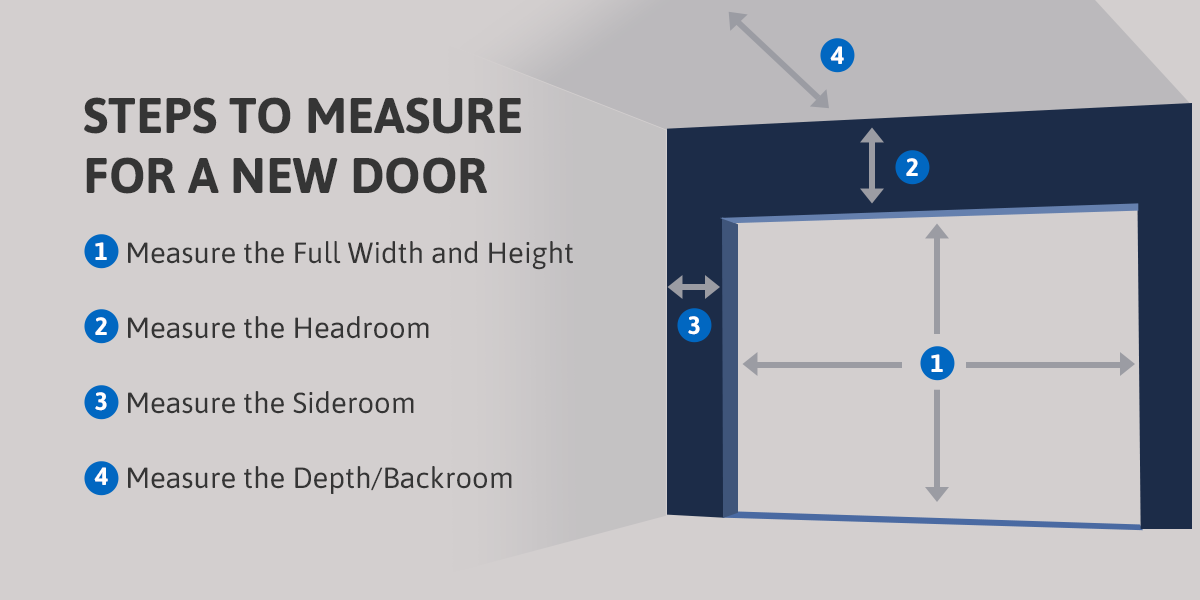
Steps to Measure for a New Door
Here’s a step-by-step process for measuring a garage door opening replacement:
1. Measure the Full Width and Height
Your new garage door needs to fit inside the full width and height of the opening. Measure the distance from the top of the opening to the floor and from one side of the frame to the next. Since the width and height of the opening determine the size of the door you get, use a level to identify or rule out possible unevenness on the floor.
2. Measure the Headroom
This is the distance between the ceiling and the top part of the door. You can use a ladder to obtain the measurements. Alternatively, extend the tape from the ceiling to the floor and deduct the full height of the door from the measurements to get the headroom readings.
Remember, you need ample space in this area if you want to install a garage door opener — at least 12 inches for mounting the header bracket. Take note of obstructions limiting clearance, such as piping or a drop ceiling.
3. Measure the Sideroom
The sideroom is similar to the headroom but is located on each side of the garage door opening. If you have multiple openings for multiple doors, measure the distance between each opening. For multiple door openings separated by a column or a wall, the sideroom is the distance between the opening and the wall or column.
4. Measure the Depth/Backroom
The backroom is the area from the door opening all the way back. To measure unobstructed depth, measure back all the way or up to the point of obstruction. The available space in this area will determine the type of garage door you get and is also for track installation. If the space is limited, you may have to consider a wall-mounted operator.
What Are the Standard Door Sizes?
Have you ever wondered what size is a garage door? Much like entry and interior doors, residential garage doors have varying sizes due to considerations for custom home builders. Knowing where your door falls helps with taking accurate measurements. Let’s look at standard garage door sizes and common custom-build options on the market.
Standard garage door sizes can vary from place to place. However, the common dimensions for single garage doors are 8 or 9 feet wide by 7 feet tall, and double garage doors measure 16 feet wide by 7 feet tall.
However, every home’s needs vary, so standard custom-build sizes like 9 feet wide by 8 feet tall for single doors are common. Custom double doors can range from 16 feet by 8 feet to 18 feet by 12 feet. While these are the standards, some manufacturers often make customized exceptions to match your unique dimensions and preferences.
Get the Right Garage Door at Quality Door Company
Measuring a garage door is straightforward once you know what to measure and how to ensure accuracy. If you’re uncertain about choosing the right door for your space or navigating your unique garage space design, seek expert assistance. As a homeowner in Western Michigan, you can rest easy by working with Quality Door Company.
We are an award-winning company with over 40 years of experience installing and maintaining various garage door brands. Browse our high-quality garage doors and openers from top brands or request an estimate to work on your garage door with industry experts.
12 Tips for Securing Your Garage Door
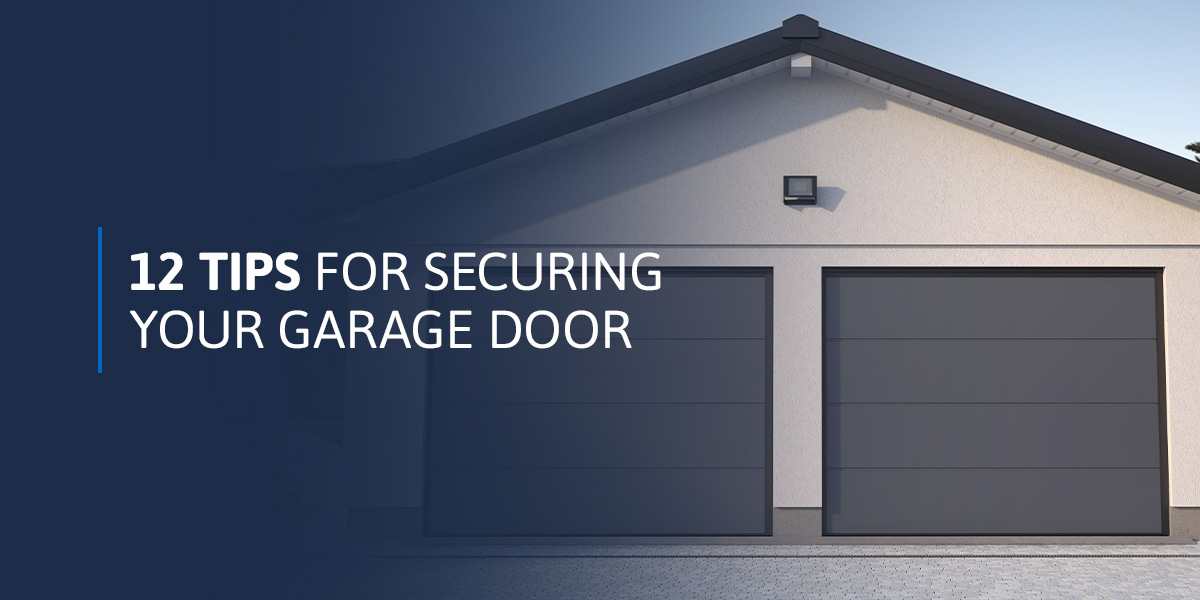
While it may be the last thing you want to consider, planning for a burglary is the best way to protect you and your home against one. Most times, a burglar will enter your home through the front door. However, if the front door is inaccessible, they may try other ways, such as the garage door. Knowing how to secure a garage door will ward against thieves and give you extra peace of mind.
How Can I Improve the Security of My Garage Door?
It only takes a few minutes for determined thieves to break into your home. You have even more reasons to take safety measures if you have an attached garage. Here’s our expert advice for securing your garage door.
1. Look at Your Home Like a Burglar
The first step in stopping a burglar is to pretend you are one. Take a few minutes to walk around your garage and ask yourself how you would try breaking in. This exercise can help you quickly identify and prioritize vulnerable areas.
2. Keep Your Garage Doors Locked
If you manually open and close your garage doors, you likely already know the importance of keeping them locked. One option is to upgrade to an automatic opener, which makes it harder for thieves to get past. Or, if that’s not an option, you can clamp a padlock on one of the door tracks to ensure they stay closed. It is also wise to get into the habit of keeping your exterior service and interior garage access doors locked.
3. Zip-Tie the Emergency Release
All automatic garage door openers have an emergency release lever with a bright red cord that enables you to open or close them during a power outage. This feature is handy for homeowners and burglars alike — anyone can push in on the garage door, create enough of a gap to reach the cord with a wire hook, then pull it to open the door.
One of the least expensive tips for securing your garage door is to zip-tie the cord. You’ll keep your belongings safe from burglars while offering easy access to the release in an emergency.
4. Don’t Leave Your Garage Doors Open for Long Periods
An open garage door is very noticeable, even if you aren’t planning a robbery. Instead of inviting anyone to enter your garage or home, keep your garage door closed whenever possible. Do not take anything for granted, regardless of whether you are home, working outside or live in a safe neighborhood. Some newer garage door opener models make this easy by allowing you to check the garage door’s status at a glance, or you can purchase a stand-alone door monitor.
5. Upgrade Your Outdated Door Opener
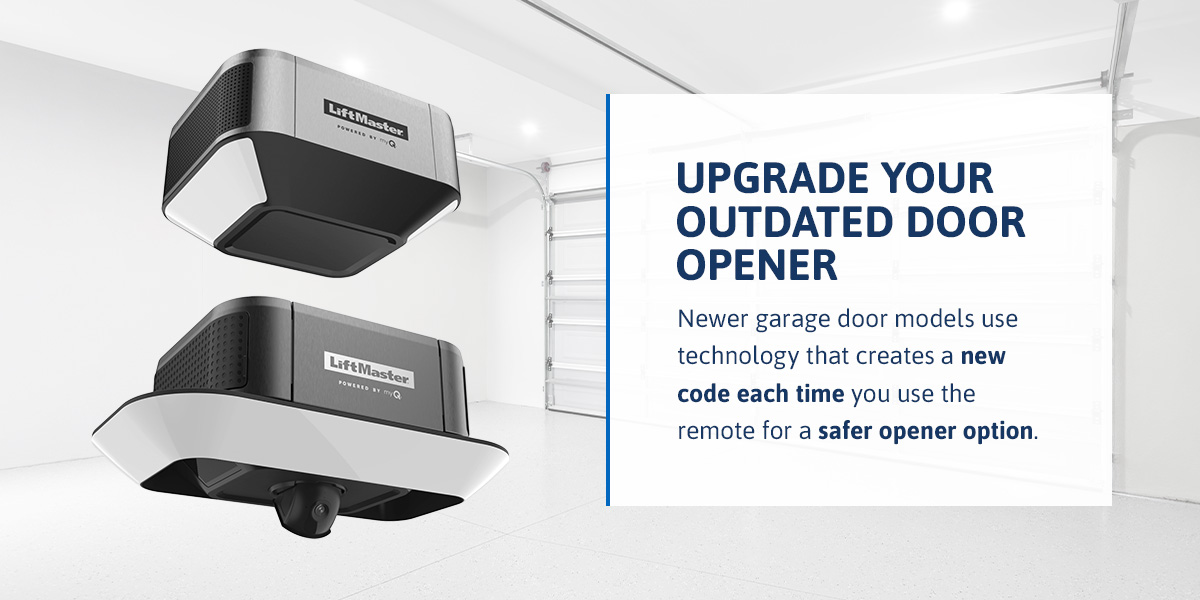
While automatic garage door openers can keep your garage safer, this safety goes out the window if your opener is older. Burglars are getting smarter, and they may have a scanner that tells them your access code. Or, a neighbor may have the same access code as you and can accidentally open your garage doors with their remote. Newer garage door models use technology that creates a new code each time you use the remote for a safer opener option.
6. Cover Your Garage Windows
While windows let in natural light and fresh air, they offer numerous ways for thieves to peek inside your garage. As the burglar looks into your windows, they may look for items to steal or check to see if anyone is home before they start their break-in.
You have several options for keeping your windows safer. The first is covering the windows with blinds or curtains. Another idea is to apply a translucent film or choose a frosted glass design to let sunlight in without allowing others to look in.
7. Install Brighter Exterior Lighting
Poor exterior lighting may make your home more attractive to a potential burglar. By ensuring all entry points are well-lit, you may cause a would-be criminal to think twice before trying to enter your home. Place lights at least 10 to 12 feet above the ground so a burglar can’t deactivate them.
8. Check the Condition of Your Garage Doors
Older garage doors that have warped or do not provide a tight seal are a liability for your home’s security, as any gaps make it much easier for a burglar to break in. If you notice your overhead doors look run-down, replace them with a newer, more secure model.
9. Don’t Leave Valuables in Your Garage
If you use your garage as your catch-all storage space, be careful not to store high-value belongings in your garage or vehicle. Even if you keep your doors locked, having an expensive item in sight may tempt a burglar and put your security measures to an unwanted test.
10. Don’t Leave Your Remote Opener in Your Car
Most homeowners leave their remote openers in the glove compartment or attached to their car’s visor. These locations may be convenient, but remember, any thief who snatches it can quickly access your garage and home.
11. Lock up Tools
If your garage doubles as your workspace, you may have a lot of tools and other supplies around the space. Instead of leaving your tools out where a thief can easily see them, lock them up after each use. Putting them away can also help keep them in top condition longer.
12. Be Vigilant
Being vigilant involves staying alert for suspicious activity around your neighborhood. Team up with your neighbors to keep an eye out. Offer to park in their driveway to look like someone is always home and pick up their newspapers or mail while they’re out of town.
Let Quality Door Company Keep Your Garage Door Safe
Whether you want to install a new door, opener or entry door for your garage, Quality Door Company offers a wide selection of secure options that enhance any home. We are a proud Clopay® Master Authorized Dealer®, and many of our garage door options have high safety ratings for your peace of mind. Explore our wide selection of secure garage doors to start enjoying a safer home today!
Getting Your Garage Door Ready for Fall
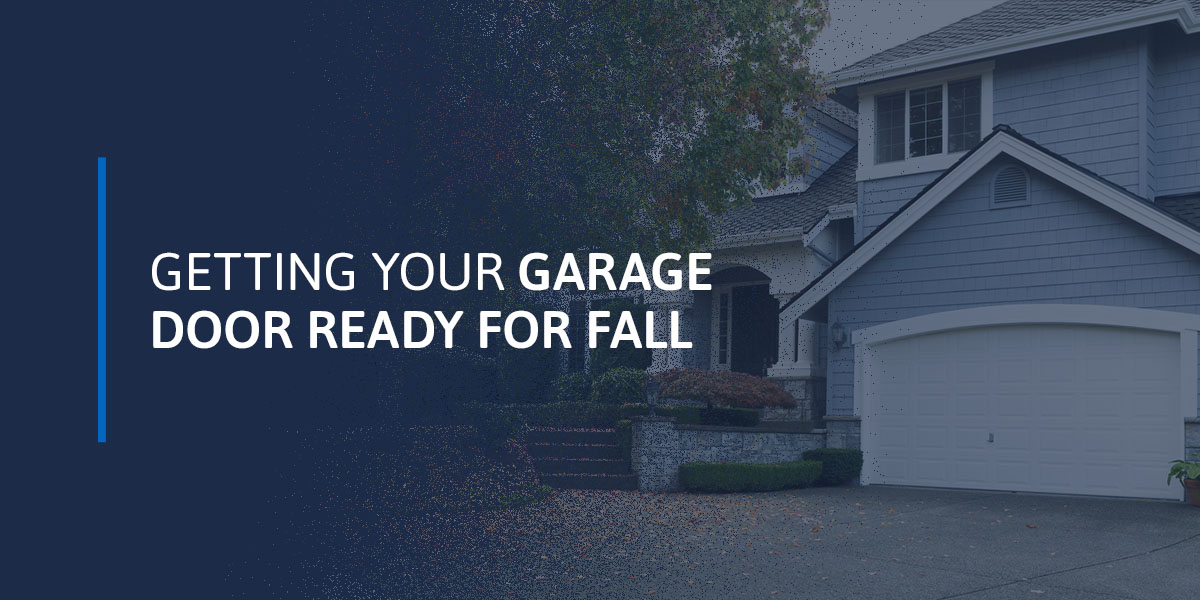
As the crisp autumn air settles across the Midwest, it’s time to turn your attention to an often overlooked but crucial part of your home — the garage. Fluctuating temperatures and eventual frost can lead to issues like contracting metal components, cracking seals and malfunctioning openers. Proper preparation ensures energy efficiency and a prolonged life span of garage components, potentially saving you money on heating bills and costly repairs come winter. This comprehensive guide will walk you through how to prepare your garage for fall to safeguard your home against the harsh Midwest winter ahead.
Essential Fall Garage Prep Steps
Fall garage maintenance creates a safe, efficient and comfortable space that can withstand the winter. It includes several crucial steps:
External Inspection
Examine the garage door for signs of damage, such as peeling paint, cracks or dents, and fix these issues. The cold fall winds and brutal winter air can exacerbate these signs, leading to costly repairs in spring or summer.
Also, examine the springs, cables and rollers for wear. Look for frayed cables, rusted springs or worn rollers. These components ensure your garage door safely operates and should be repaired or replaced at the first sign of wear.
Operational Inspection
Test the door’s operation by opening and closing it several times. Listen for unusual noises that might indicate worn or damaged components. Pay attention to how smoothly the door moves. If it hitches or has jerky motions, there may be problems with the tracks or rollers.
Test the garage door opener and auto-reverse features as well. The door should immediately reverse if it encounters an obstacle like a piece of wood or cardboard box. If it doesn’t reverse, adjust the settings according to the manufacturer’s instructions or call a professional. Installing a new smart garage opener can provide additional security, allowing you to monitor and control your garage door remotely via your smartphone.
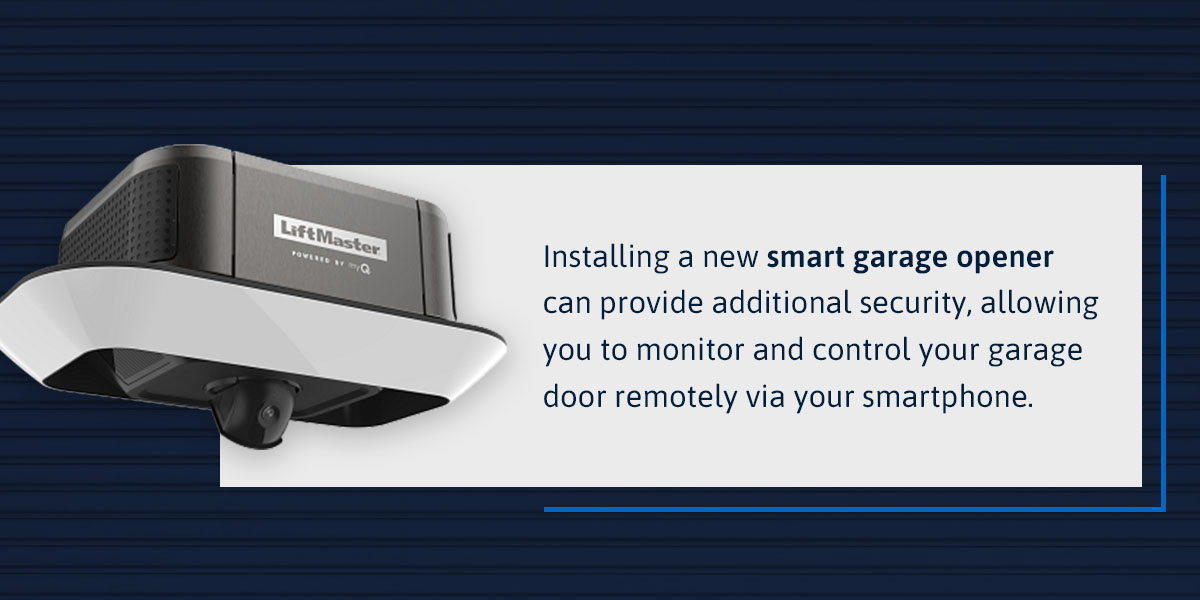
Check the door’s balance by disconnecting the opener and manually lifting it halfway. The door must stay in place. If it doesn’t, the springs may need adjustment, but this is not a fix you should attempt yourself. Consult a professional to ensure safe and proper adjustment.
Lubricate all moving parts, including hinges, rollers and springs, with a silicone-based lubricant. Lubrication ensures smooth operation, which is vital during the winter. It also helps prevent rust and corrosion.
Weatherproofing Your Garage Door
Weatherproofing your garage is essential for maintaining interior temperature and preventing drafts. Inspect the weather stripping around the garage door. Over time, this can become brittle, crack or fall off. Replace damaged sections to ensure a tight seal when the door is closed.
Examine the bottom garage door seal. When the door is closed, it should make full contact with the ground. If you can see light or feel a draft at the bottom of the door, it’s time for a replacement.
Check for gaps or cracks around the door frame. Pay special attention to areas where the frame meets the walls, as these are common spots for drafts. If you find gaps, seal with weatherproof caulk to prevent cold air from seeping in.
Insulating Your Garage
Proper insulation is fundamental to energy efficiency and comfort in your garage. If your garage walls are not insulated, consider adding fiberglass batts or foam board insulation to reduce heat loss and make the space comfortable for year-round use.
Remember to insulate the garage door, especially if your door is older. Install a garage door insulation kit to maintain temperature and reduce energy costs. These kits are relatively inexpensive and can often be installed as a DIY project.
Remember to insulate the ceiling, especially if you have a living space above the garage. Proper ceiling insulation keeps the garage warmer and prevents heat loss from the rooms above.
Heating Options
If you use your garage as a workspace or for storing temperature-sensitive items, you may want to consider heating options.
- Portable space heaters: These can be a good solution for occasional use, providing targeted heat when and where you need it.
- Ceiling-mounted heaters: For more frequent use, ceiling-mounted heaters can be a more permanent and efficient solution. These keep the heat source out of the way, freeing up valuable floor space.
- Radiant heating systems: Either installed in the floor or as panels on the walls or ceiling, these can provide even, comfortable heat throughout the space. While more expensive to install, they can be energy-efficient in the long run.
Whichever option you choose, ensure all heating devices are rated for garage use and follow all safety guidelines. Keep flammable materials away from heat sources and never leave heaters unattended.
Fall Storage Tips for Efficient Space Management
Effective fall storage tips can help you maximize space and keep your garage organized throughout the colder months. Follow these tips for proper storage:
- Garage cleaning for fall: Declutter your garage, identifying what you want to keep, donate or discard. After decluttering, clean your garage from top to bottom. Dust light fixtures, wipe surfaces and sweep, mop or vacuum the floor. Use a degreaser or stain remover for tougher grime, especially on workbenches or tool storage areas.
- Storing smaller items: Consider using airtight containers to protect smaller items like garden tools or sports equipment against moisture and pests. Label these containers clearly so you can find what you need.
- Storing a lawnmower: Drain the fuel tank or add a fuel stabilizer to prevent the fuel from degrading over the winter. Clean the undercarriage thoroughly to remove grass clippings, which can hold moisture and cause rust. Cover the mower with a breathable cover to protect it from dust while allowing air circulation.
- Special storage systems: Implement vertical storage solutions like shelves and pegboards to maximize floor space, keep items off the floor and make items easier to locate. Consider a ceiling storage system for items you won’t need until spring or summer. Be mindful of weight limits and ensure that ceiling-mounted storage doesn’t interfere with your garage door operation.
- Storing hazardous materials: Store hazardous materials like paints, chemicals or fuel in locked cabinets out of reach of children or pets. Ensure your fire extinguisher is easily accessible and not buried behind seasonal decorations.
- Pest prevention: Seal cracks or holes to prevent pests from seeking warm shelter in your garage during the fall and winter. Consider using natural pest deterrents like peppermint oil or cedar blocks near the door and in dark corners.
Proper fall storage ensures your items remain safe through the colder months and are easily accessible when the temperature rises. It also helps prevent slips or items from falling on you when you rush in to avoid the cold during the winter.
Trust Quality Door Company for Your Fall Garage Prep Needs
Preparing your garage for fall is paramount, especially for homeowners in the Midwest. Quality Door Company has covered you for professional garage door maintenance and comprehensive repairs. Our experienced technicians provide emergency repair services to address issues you’ve identified during your fall prep. We also offer comprehensive preventive maintenance to keep your garage door system running smoothly year-round.
Contact us today to schedule your repair, maintenance or replacement installation service and ensure your garage is ready to withstand the harsh Midwest winter.
What Garage Doors Have the Longest Life Span, and How to Improve Yours
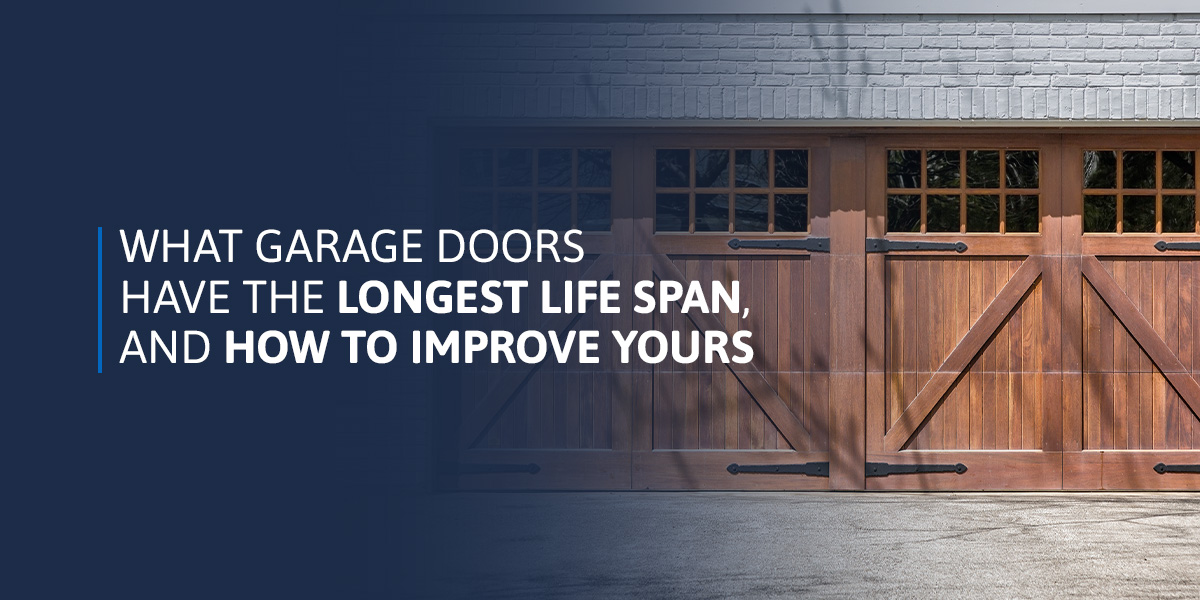
Garage doors benefit your home in many ways — providing security, access and curb appeal. That’s why you should keep yours in top condition. Knowing how long your overhead door and its core components last can help you better understand how to improve your garage door’s life span and when you may need to replace it.
What Is the Average Life Span of a Garage Door?
The average garage door life span is between 15 and 30 years. However, this estimate may vary based on various factors.
- Usage: While garage doors can last a long time, constant heavy usage can shorten their life span. Your overhead springs influence how many opening and closing cycles your door has. The more you use your door, the more wear you place on your springs, resulting in a shorter life.
- Care: Routine maintenance is one of the best ways to prolong your door’s life.
- Quality and price: Investing in a higher-quality door will enable you to enjoy a longer life span and get more from your investment.
- Local climate: Inclement weather like snow, wind and rain can sometimes damage your door and wear it out faster.
What Materials Provide the Longest Garage Life Span?
To prioritize garage door durability, some of the most durable overhead door materials include the following.
- Steel: Steel is one of the most reliable garage door materials. It is durable, low-maintenance and keeps your garage cooler. A steel overhead door can also maintain its shape over time, making it resistant to wear and tear.
- Wood: Many homeowners choose wood because of its aesthetic appeal and durability. Wood resists dents due to its natural strength.
- Fiberglass: Besides being resistant to warping or chipping, fiberglass can mimic textures like wood, making it an attractive and durable option. Fiberglass also resists corrosion, allowin you to take full advantage of its durability.
- Aluminum: Aluminum is fade- and rust-resistant, making it an ideal garage door option. Like fiberglass, aluminum is corrosion-resistant, allowing a longer life span.
- Wood composite: A wood composite overhead door has recycled wood fibers, giving it the look and texture of polished wood. Since this material is not 100% wood, it resists moisture and warping.
How to Increase the Longevity of a Garage Door
Preventive maintenance is one of the easiest ways to extend the lifespan of your garage door. Start by following these eight garage maintenance tips.
1. Be Mindful of How Much You Use an Older Door
The easiest way to prevent an older door from aging too fast is to use it less often. Your door and its components can only handle so many opening and closing cycles, and more frequent use exposes your door to extra wear and tear. While you don’t have to stop opening and closing your door entirely, try to use your garage door only when necessary and keep your remote away from children.
2. Check Safety Features
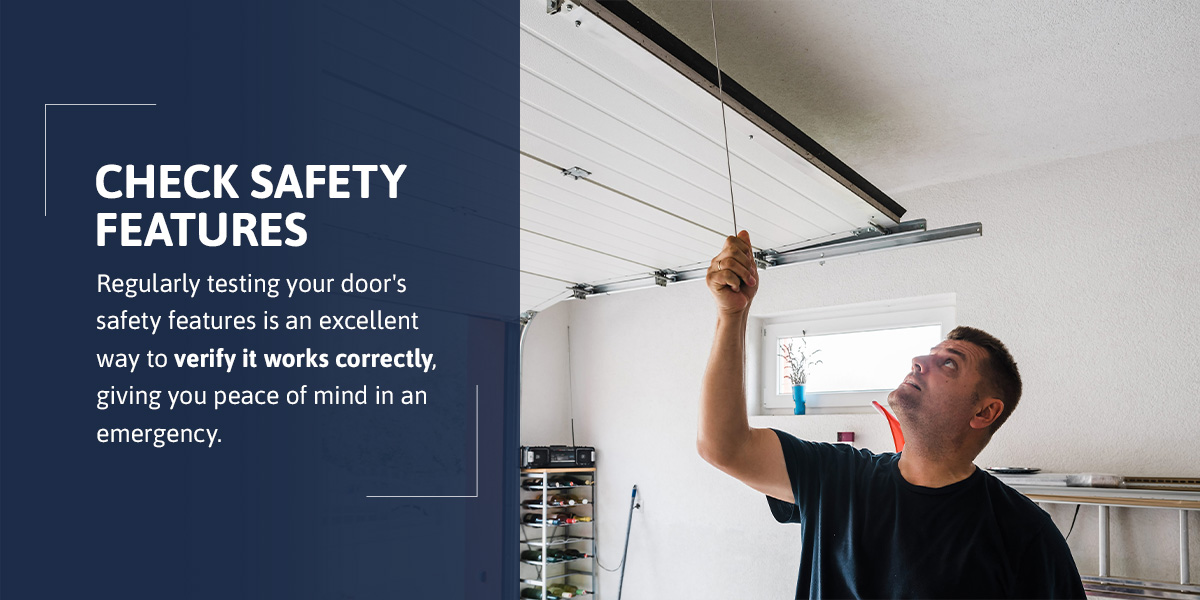
Regularly testing your door’s safety features is an excellent way to verify it works correctly, giving you peace of mind in an emergency. Double-check the sensors by putting a small object in their path during an opening or closing cycle. Pull the emergency cord to confirm you can manually move the door along its track.
3. Inspect All Your Garage Door’s Hardware
Your garage door has various screws, pulleys and springs, which can become loose or wear down over time. Checking the tightness of the hardware every few months and for wear every two years will allow you to quickly spot issues and ensure your door remains in excellent condition for longer.
4. Test the Door’s Balance
When you check your door’s emergency cord, you should also verify its balance. Pull the emergency cord and manually open the door halfway. A balanced door will remain in place, while an unbalanced door will fall. If you have an unbalanced door, call a technician to fix it.
5. Inspect the Door’s Weatherstripping
The rubber weatherstripping around the door’s outer edges prevents wind, water, bugs and debris from entering your garage. However, weatherstripping can wear down over time, so inspect and replace it as soon as you notice an issue.
6. Keep Your Garage Door Clean
A dirty garage door can cause corrosion or lose its pristine appearance. Washing your overhead door and the tracks can prevent rust and keep it looking beautiful.
7. Monitor the Cables
A garage door’s cables must be strong enough to lift the door without breaking. Frayed cables can fail, harming the door, yourself or your home.
8. Lubricate All Parts of Your Door
While every overhead door experiences natural wear and tear, lubrication can prevent damage from occurring too quickly.
When to Replace a Garage Door
Sometimes, it can be hard to tell whether your garage door has a few more years left or needs a complete replacement. Some signs you need to replace your door include:
- You want better insulation.
- Your door is noisy as it opens or closes.
- Your door opens or closes slowly.
- The door sags.
- You notice corrosion.
- The door has numerous dents and dings.
- If you have a wooden door, it is warping, cracking or peeling.
- The door no longer opens or closes correctly.
Find Long-Lasting, Durable Garage Door Options at Quality Door Company
If you need repair, maintenance or installation services, the team at Quality Door Company is proud to go above and beyond to keep your garage door in excellent condition. We have years of experience providing exceptional repair and maintenance services, and we can easily help you extend your overhead door’s life span.
When it’s finally time to replace your garage door, we’re a Clopay® Master Authorized Dealer® and offer durable, long-lasting overhead doors and openers to maximize your investment. Explore our wide selection of doors to find the right option for your home today!
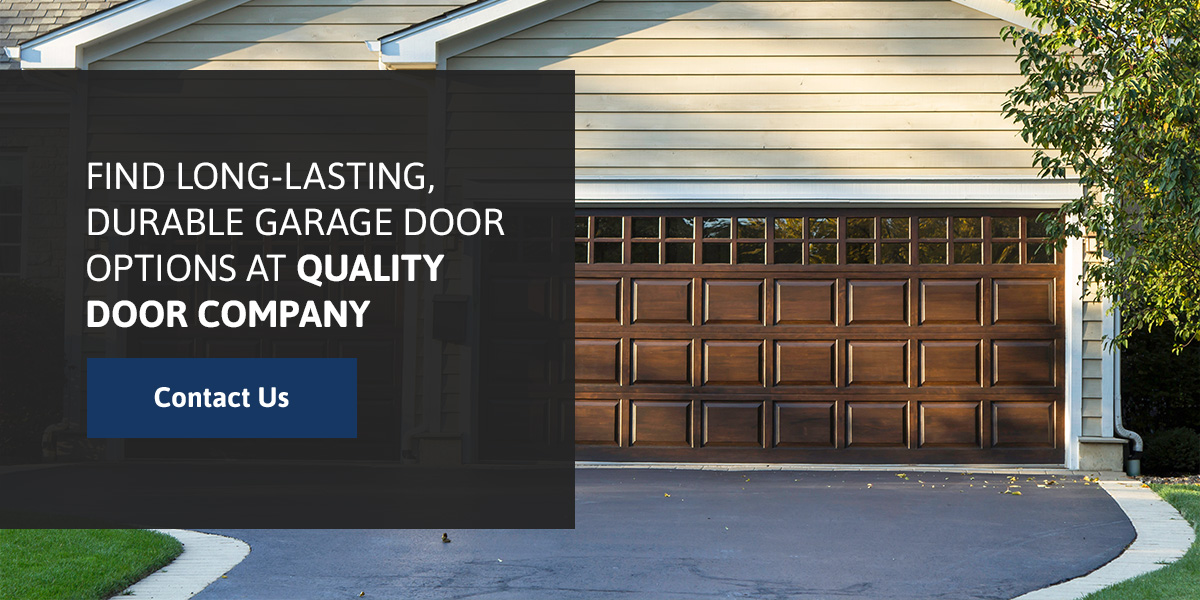
The Ultimate Garage Cleaning Checklist
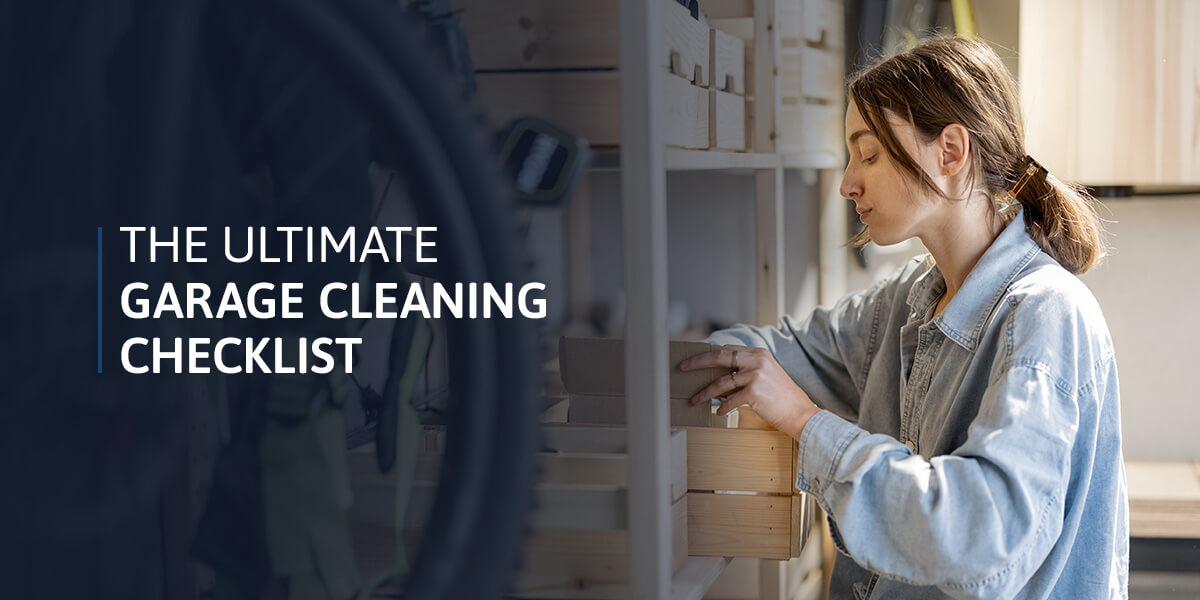
A clean and tidy garage has many benefits for homeowners. In addition to improving safety, a nicely organized space is more conducive to your family’s daily activities and helps you get more out of your property’s square footage.
Following a specific set of steps can streamline your process and ensure you tend to all of the space’s most important elements. This ultimate garage cleanout checklist can be your guide to revamping your garage today.
Phase 1: Preparation
The first phase of a comprehensive garage clean out is taking inventory of your space. As you look around, determine the types of cleaning tools you’ll need and whether there are items taking up valuable room that you can eventually get rid of.
Once you have a good understanding of the scope of your project and how long it will take to complete, you can tackle the following steps:
- Remove trash: Throw out any miscellaneous trash or recycling items you can quickly get out of your way, such as cardboard boxes or empty water bottles.
- Gather your cleaning supplies: You’ll likely need an all-purpose cleaner, a scrub brush, microfiber cloths, a vacuum, a broom, and a mop. Keep these items close by so you can easily grab them as needed.
- Choose the right clothes: Wear an outfit that you don’t mind getting dirty and will protect your body from any chemical cleaners you use. Depending on your garage, you may need to wear closed-toed, hard-soled shoes for this process.
- Dust: Dusting the area and removing any cobwebs can help keep the rest of the cleaning process easier for you and anyone else helping with this project.
Phase 2: Decluttering
A clean garage checklist wouldn’t be complete without a good declutter. Follow these steps to start refining and tidying up your space:
- Eliminate hazards: Begin the second phase by inspecting your garage for potential safety hazards. Take any items that pose a fire risk, such as paint, gasoline or propane, to an alternate location away from your home. Create a safe area to complete the rest of your cleanout.
- Remove bulky items: Take especially large and in-the-way items out of your garage for the time being. Move cars, mowers and other equipment elsewhere while getting to the bones of your space.
- Create piles for items you are parting with: Establish a donate, discard and sell pile. Start going through your garage, item by item. Go through shelves, drawers and containers until you narrow down everything to only the things you’ll be keeping.
- Organize items you are keeping: As you embark on the decluttering process, start placing items in their designated areas. This will make putting your garage back together and organizing your belongings a bit easier later on.
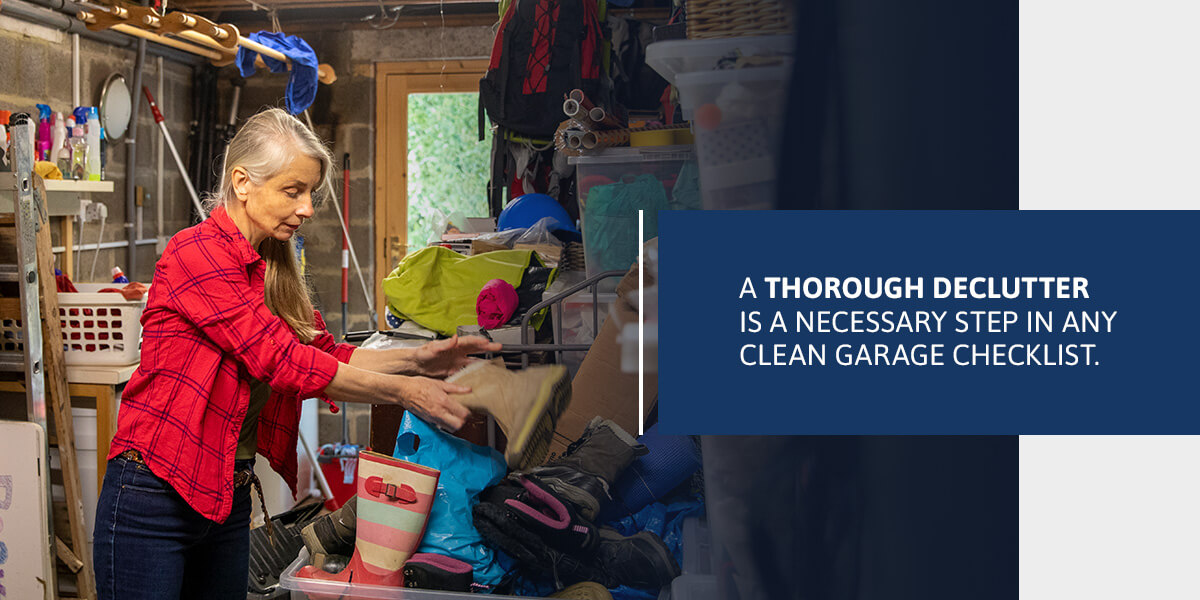
Phase 3: Deep Cleaning
With the clutter out of the way, you can begin the deep cleaning process. This phase is essential for establishing the cleanest and most functional space possible for you and your family. Explore the key checklist items below:
- Wipe down surfaces: Get rid of dirt, dust and debris on any surfaces, shelving or drawers. The goal is to create a clean foundation for your things when you organize them into their permanent storage locations.
- Scrub windows and doors: Next, tackle your windows with a glass cleaner and soft microfiber cloth. Remove any pollen, bird droppings, dirt or debris. Consult the manufacturer’s instructions for how to clean your garage door properly and safely — don’t use a pressure washer, abrasive scrubbers or harsh chemicals. Also, make sure to remove any debris from the tracks for proper operation.
- Remove stains: If you have oil or grease stains on your garage floor from your car or lawn mower, it can be beneficial to tend to these imperfections during the cleanout. The best way to remove these tough stains will depend on the type of garage flooring you have.
- Wash the floors: Sweep or vacuum any loose debris from the ground, and use a mop to wash away anything left behind.
Phase 4: Organizing
After decluttering and deep cleaning your garage, it is time to start the organization phase. How you design and set up your space will determine how functional and easy to maintain it is. In the following steps, you’ll find tips for keeping your garage clean and well-organized:
- Install any storage solutions: If you need to introduce additional shelving or racks to increase garage storage, do that now. Ensure you install these solutions securely before adding your items. Consider creating labels to help you identify where certain items are more efficiently.
- Arrange your space: Place your items in their designated locations, keeping things as neat and orderly as possible. Your garage organization process should optimize your available space while making the items you need regularly easy to access.
- Create designated areas: When adding items back into your garage, consider dedicating different zones to specific purposes. For instance, keep sports equipment, tools and car-related items in their own corners or shelves.
Phase 5: Maintenance
The final phase is all about maintenance. Garage upkeep is important for keeping your systems operating reliably and ensuring the space is secure and functional at all times.
- Test your garage door: Inspect your garage door for cosmetic issues and ensure it functions properly. Listen for any strange noises or especially loud motor sounds. Check to see if the door is well-balanced and moving smoothly. If you notice anything unusual, schedule repair services promptly.
- Check lights: Test your indoor and outdoor garage lights. Replace any burnt-out bulbs and ensure you can adequately illuminate the space at night.
- Schedule preventive maintenance: Keeping up with a preventive maintenance routine for your garage door can extend its working life span and ensure it operates properly when your family needs to use it. Having an expert technician inspect and service your door at least once a year is key.
Turn to Quality Door Company for Garage Door Repair and Maintenance Services
If you need garage door services near western Michigan, the team at Quality Door Company is here for you. For more than 40 years, we have provided customers with best-in-class garage door installation, maintenance and repair services. We want to help you make your home more secure and reliable with superior assistance.
We are a Clopay® Master Authorized Dealer®, enabling us to offer a complete line of door systems for nearly all applications, and you gain peace of mind knowing our doors are as durable as they are beautiful.
Contact Quality Door Company to schedule your service appointment or get a free estimate today!
A Guide to Choosing the Right Garage Door Opener for Your Home
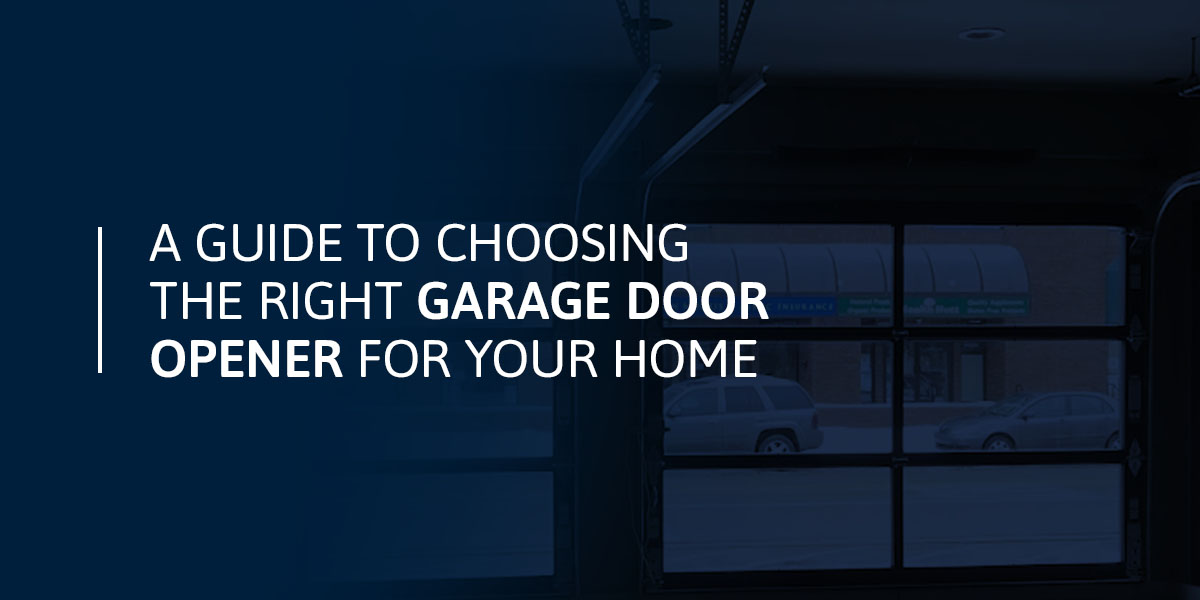
Homeowners or property owners looking to upgrade their garage door opener should understand a few basics about selecting the right model. With various types, brands and exciting new features on the market, narrowing down the perfect one can be challenging without some guidance and direction. You’ll want an opener that accommodates your budget while offering features for enhanced performance, efficiency and security.
This garage door opener buying guide explores some essential considerations to determine the right option for your home or rental property. We’ll also cover some of the best garage door opener models and the different features they offer.
How to Pick the Right Garage Door Opener: Key Considerations
Your garage door is an investment in your home’s security and aesthetics. The opener you choose will directly impact your door’s functionality and tech capabilities. A few factors can inform your decision-making and ensure you select the right opener for your wants and needs.
Here are some factors to consider when selecting a garage door opener:
1. Type
The best garage door opener will depend on your available space and the noise level you are comfortable with. Some popular types of openers include:
- Chain-driven door opener: This type is often the most cost-effective and uses a durable chain to open and close your door. It is best for budget-conscious consumers, those who are not as worried about noise and homes with especially heavy garage doors.
- Belt-driven door opener: The belt on these openers allows for quieter operation than chain-driven models while still offering the same power and reliability.
- Jackshaft door opener: A jackshaft garage door opener takes up less ceiling space than other types. It also accommodates quieter, smoother operation.
2. Features
Different garage door openers have unique capabilities and details that can serve various everyday needs. Explore some advanced features to look for when investing in a new opener:
- Smart features: If you want to control your garage door from the convenience of your smartphone, select an option that has Wi-Fi connectivity and links with a mobile app. You can use these smart features to increase control, set automated schedules, monitor activity and illuminate your space.
- Cameras: You can find door openers with high-quality, built-in cameras that support live streaming and video storage. Some also feature two-way audio tools for real-time communication.
- Battery backup: A battery backup will help your household enter or exit your garage during a power outage or emergency situation.
3. Brand and Price Point
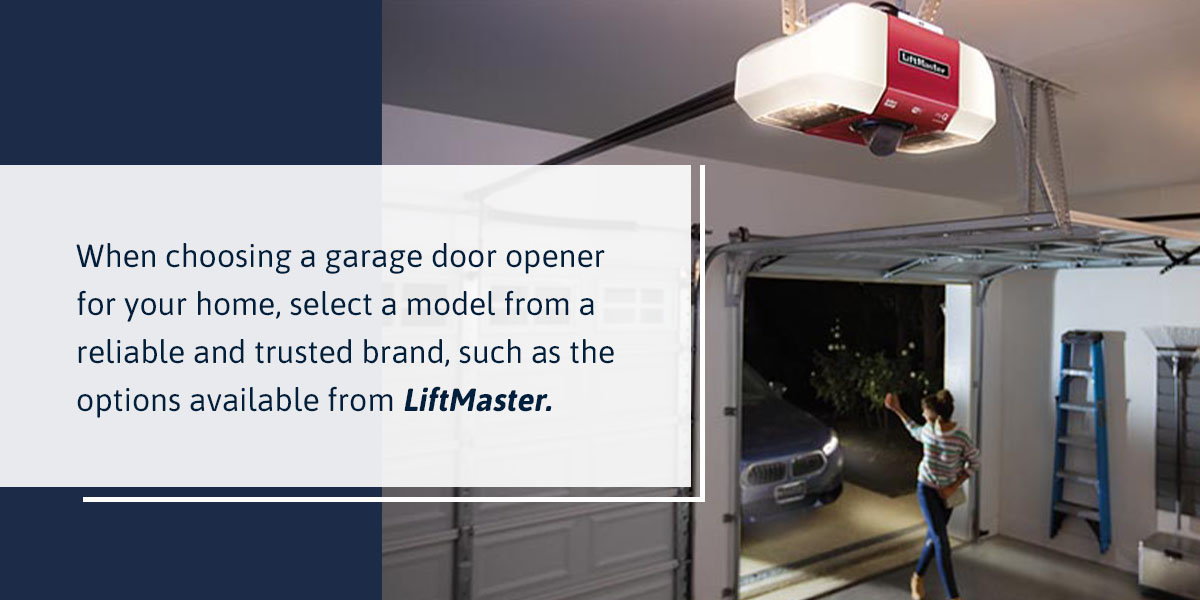
When choosing a garage door opener for your home, select a model from a reliable and trusted brand, such as the options available from LiftMaster. These garage door openers are built for longevity and durability, so you can enjoy peace of mind and fewer maintenance and repair needs. Investing in a high-quality model can provide long-term savings.
Examine your budget and determine which features you’d like to introduce to your garage. Once you have a general idea of how much you can spend, you can narrow down the technologies and capabilities most essential to you and your family.
4. Safety and Security
Security should be top of mind when selecting a new garage door opener for your home or rental property. Consider whether you’re interested in one or more of these safety features:
- Sensors: All LiftMaster garage door openers feature safety sensors, which help prevent accidents and injuries by stopping the door’s operation when an obstruction is present.
- Lights: Motion-detection and remote-control lights help illuminate your garage, simplifying parking and enhancing security.
- Electronic protection: Some opener models allow you to combat forced entry from the safety and convenience of your mobile device.
5. Performance
Performance is among the most important considerations when selecting the ideal garage door opener. Consider the design and layout of your home. For instance, if your garage is close to your living areas, you may want an opener that supports quiet and smooth operation.
You’ll also want to pick a durable, vibration-free model that supports efficient operation. A fast, reliable opener can accommodate and streamline your family’s busy daily routines.
6. Installation
Professional installation is always best when it comes to your garage door and opener. These systems are extremely heavy and can be dangerous if you are not well-versed in installation best practices. An expert will ensure your opener suits your door’s weight, size and materials.
If you’re still uncertain about how to choose the right garage door opener for your space, consult with a professional installer. They can help you find a suitable model that’s compatible with your door and architecture.
Top Garage Door Openers to Consider
LiftMaster is an industry-leading brand for quality garage door openers. It equips its models with innovative features to support reliable and convenient operation.
Learn more about some of the top openers from LiftMaster:
- AC Chain Drive 81650 Wi-Fi Garage Door Opener: This model works with the myQ® app and enables you to control the door from your smartphone. It works with Amazon Key for secure package deliveries, and its DC motor supports virtually silent operation.
- AC Chain Drive 85870 Wi-Fi Garage Door Opener: This option was created for the heaviest garage doors. It features the strongest motor in the LiftMaster lineup and an I-beam rail system for optimal support and functionality.
- Elite Series 98022 Wall Mount Wi-Fi Garage Door Opener: The Elite Series is a sleek, compact jackshaft door opener. It takes up less space than other models and can connect to your home Wi-Fi. This opener also features various security features, including motion-detection lighting.
- Secure View™ Ultra-Quiet 87504-267 Smart Opener: If you want a high-tech opener with a camera, battery backup and corner lighting, this model is ideal. It links with Amazon Key, and you can use the built-in camera to monitor your deliveries.
- Secure View™ Ultra-Quiet 84505R Smart Opener: This advanced opener has a powerful belt drive system, quiet operation and a camera for monitoring your space. It also features two-way audio to streamline communication from your smartphone to your garage. Its integrated LED lighting helps illuminate your space and enhance security.
Consult With the Experts From Quality Door Company
If you’re interested in upgrading your garage door opener, turn to the expert technicians at Quality Door Company. We’ve served homeowners and property owners in Western Michigan for more than 40 years, and our customers count on us for the highest-quality services and products.
Our garage door experts can help you determine which LiftMaster opener model suits your home or rental property best. We also offer professional installation services so your garage is functional as soon as possible.
Are you ready to install a new LiftMaster garage door opener? Browse the inventory from Quality Door Company, and request a complimentary estimate online today.
How to Fix a Noisy Garage Door
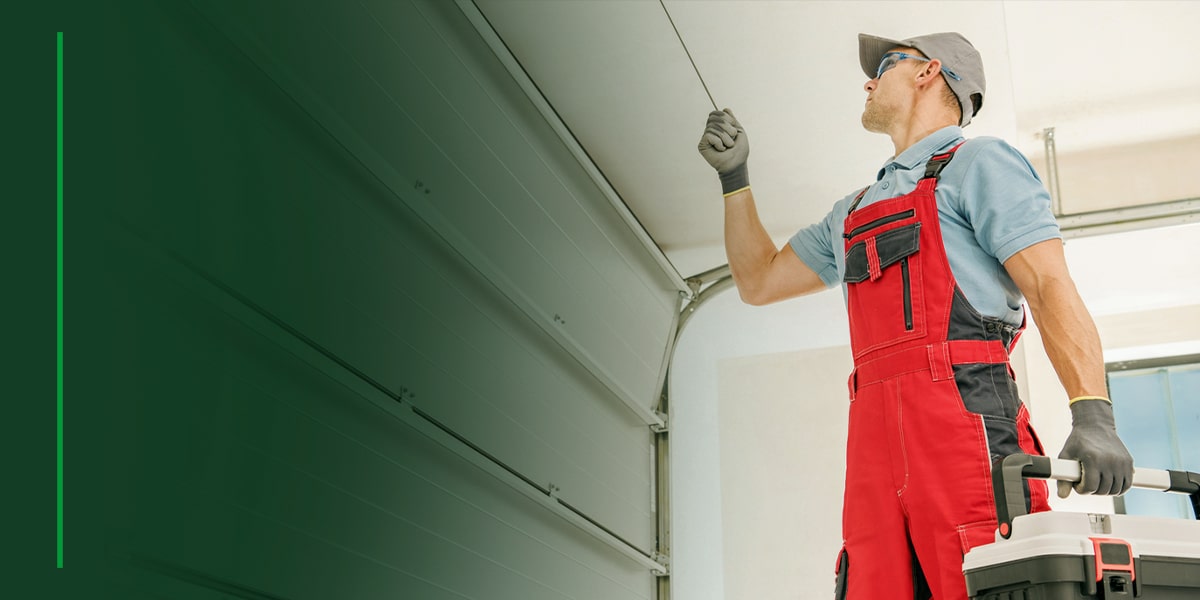
The last thing you want is your garage door to be a nuisance to anyone. Its purpose is to provide shelter and protection for your family, vehicle and other assets. When you notice your garage door making noise, you’ll want to get to the bottom of the problem to see what’s causing the unbearable racket before it worsens. Though you may not be able to fix some parts yourself because of the possible risk of injury, you can always contact a garage door contractor to assist. If you notice anything preventing your normal door movements then it’s best to call to professional to diagnose the issue.
This article will highlight a few causes of a noisy garage door and what you can do to fix it. Keep in mind that many of these issues can be prevented or addressed through regular maintenance checks. No matter how old or new your garage door is, it’s never too late or too soon to get a tune-up from a professional.
Lubricate the Necessary Parts
A garage door has many moving parts that need lubrication to operate efficiently. With regular greasing, you could ease or eliminate the noise. Though most steel parts are OK to lubricate, you should be careful not to get grease on nylon or other synthetic materials needed for the door to work. Also, ensure the lubricant you use is safe for garage door part application. Though you may think WD-40 will work as a lubricant, silicone spray is a better option and will ensure your tracks stay dirt-free for longer.
Which parts should you routinely lubricate and clean?
- Tracks: The tracks are vital to the garage door’s mobility. You shouldn’t lubricate them directly, though they will likely come into contact with lubrication used for steel rollers. Wiping the tracks with a clean cloth to remove dust and dirt will create optimal conditions for the rollers to glide soundlessly. If you are going to lubricate the tracks be sure to avoid common household spray lubricants like WD40 and use a proper garage door lubricant to avoid any residue.
- Rollers: Garage door rollers fit into the tracks and ensure the door moves smoothly. There are two types of rollers available — steel and nylon. The advantage of nylon rollers is that they are lighter than steel and, therefore, quieter. The drawback is that you can’t lubricate them as you would do with steel rollers. If your garage door has steel rollers, occasionally apply a small amount of grease to reduce unwanted noise.
- Springs: Torsion springs are above a garage door, while extension springs are on the sides. You don’t necessarily have to lubricate both types of springs, but you can apply a thin layer of grease on the coils to keep them flexible. The better oiled they are, the less noise the springs will produce.
- Bearing plates: Bearing plates at the end of torsion spring shafts require lubrication to support the spring system and help reduce friction and subsequent noise.
- Hinges: Hinges are especially susceptible to wear and tear and need more lubrication than other parts. Well-oiled hinges ensure smooth, silent operation.
- Locking mechanism: Though the locking mechanism is not part of the garage door’s mechanical structure, you can also lubricate it to reduce noise levels when opening and closing it.
If you can no longer maintain any of the parts listed above with regular greasing, it may be time to replace them. Worn components like rollers, springs and tracks all increase noise levels when they start squeaking and screeching.
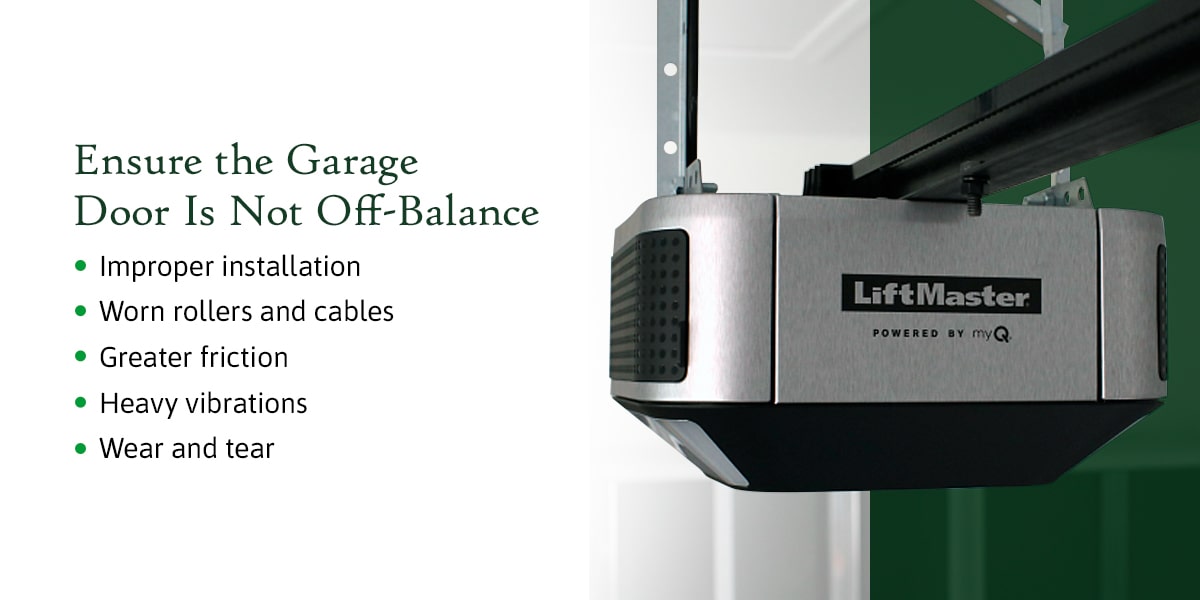
Ensure the Garage Door Is Not Off-Balance
An imbalanced garage door will pressure the opener, rollers, springs and other parts to work harder, creating friction that can be noisy. Here are a few reasons your door may be off-balance and your garage door opener is making noise.
- Improper installation: Shoddy garage door installation can have severe consequences. Professionals use specialized tools to fasten bolts, screws, springs, hinges, etc. You may hear sounds that signal something is wrong — like unusual slapping, creaking and vibrating — when it should open and close smoothly. While the noise element is a factor, safety comes first. The best way to ensure safety and prevent injury and damage is to consult an experienced garage door technician. You will also enjoy a noise-free garage as a result.
- Worn rollers and cables: When rollers experience increased strain because of an uneven garage door, they will wear out quicker or come off the tracks. They will make noise as they struggle to move under the pressure. Replacing the old rollers with new, working ones will solve the noisy garage door problem. The strain also affects cables, which are more prone to breaking because of the increased pressure. A scraping noise could indicate a cable issue, which you should check out immediately.
- Greater friction: The imbalanced garage door’s heaviness will create friction as the panels and tracks work harder to support the added weight. The door will make a buckling, creaking sound as it moves slowly along the tracks.
- Heavy vibrations: An unstable garage door tends to be shaky. It vibrates and rattles every time you open and close it. The more the parts shake, the louder the noise will be.
- Wear and tear: If your garage door is old and has seen daily use for years, the resulting wear and tear can cause it to be off-balance. You will hear grinding and other loud noises during use. In this case, consider the effectiveness of a maintenance checkup to determine the extent of wear and tear damage.
Check for a Faulty Opener Motor
The type of motor opener that operates your garage door may determine the noise levels you can expect, apart from the motor being faulty or broken. Here are the common types of openers you will find.
- Chain drive openers: This motor uses a chain that rotates a trolley to open and close the door. It is the most popular because it’s durable enough to carry the weight of bulky, cumbersome doors. One notable drawback is that this type is a noisy garage door opener because of the consistent metal-to-metal contact while in use. Lose chains are often the cause of slapping sounds in this style of opener.
- Belt-drive openers: Instead of a chain, this opener uses a belt in the same way to control the door. Noise is minimal with this opener since the rubber belt inhibits noise.
- Screw-drive openers: These devices use a motorized steel rod to open and close the garage door. They have fewer moving parts than other garage door openers and require less maintenance, but still tend to be noisier.
- Direct-drive openers: The motor is the only part of this opener that moves along an aerial chain attached to the garage ceiling, making it the quietest option.
- Jackshaft openers: This opener is on the side instead of overhead. A motor turns a beam that allows the torsion spring to control the garage door. It is also not a noisy garage door motor.
Knowing which type of opener you have helps you understand why your door might be inherently louder or quieter. Various sounds can help you identify a faulty motor.
- Clicking: An electrical issue within your motor may be causing it to make a clicking or popping sound, so it’s best to have it checked out professionally.
- Rattling: Any time you hear rattling within a part like a motor, you can safely assume an internal component is loose or broken. You might have to disassemble the motor to inspect it.
- Shaking: Vibrations and shaking are common in motors that are misaligned or nearing the end of their life.
- Grinding: A grinding or buzzing sound could indicate that the gears in your opener are worn down or damaged. Immediately call a reputable garage door contractor to attend to this issue.
- Humming: This noise may sound like your opener is straining to work. It may result in laggy performance from a worn-out motor. Ideally, you should have it replaced at this point.
Let Quality Door Company Inspect Your Garage Door Components
Though you can inspect your garage door based on the noises you’ve identified, DIY garage door repairs are extremely risky. Quality Door Company hires experienced, talented technicians who know what to look for and what to do to restore your door with no hindering noises.
When you call us, we will gladly discuss your garage door noise issues with you. If you would like any other services or an estimate, fill out our contact form and we will get back to you in no time.


